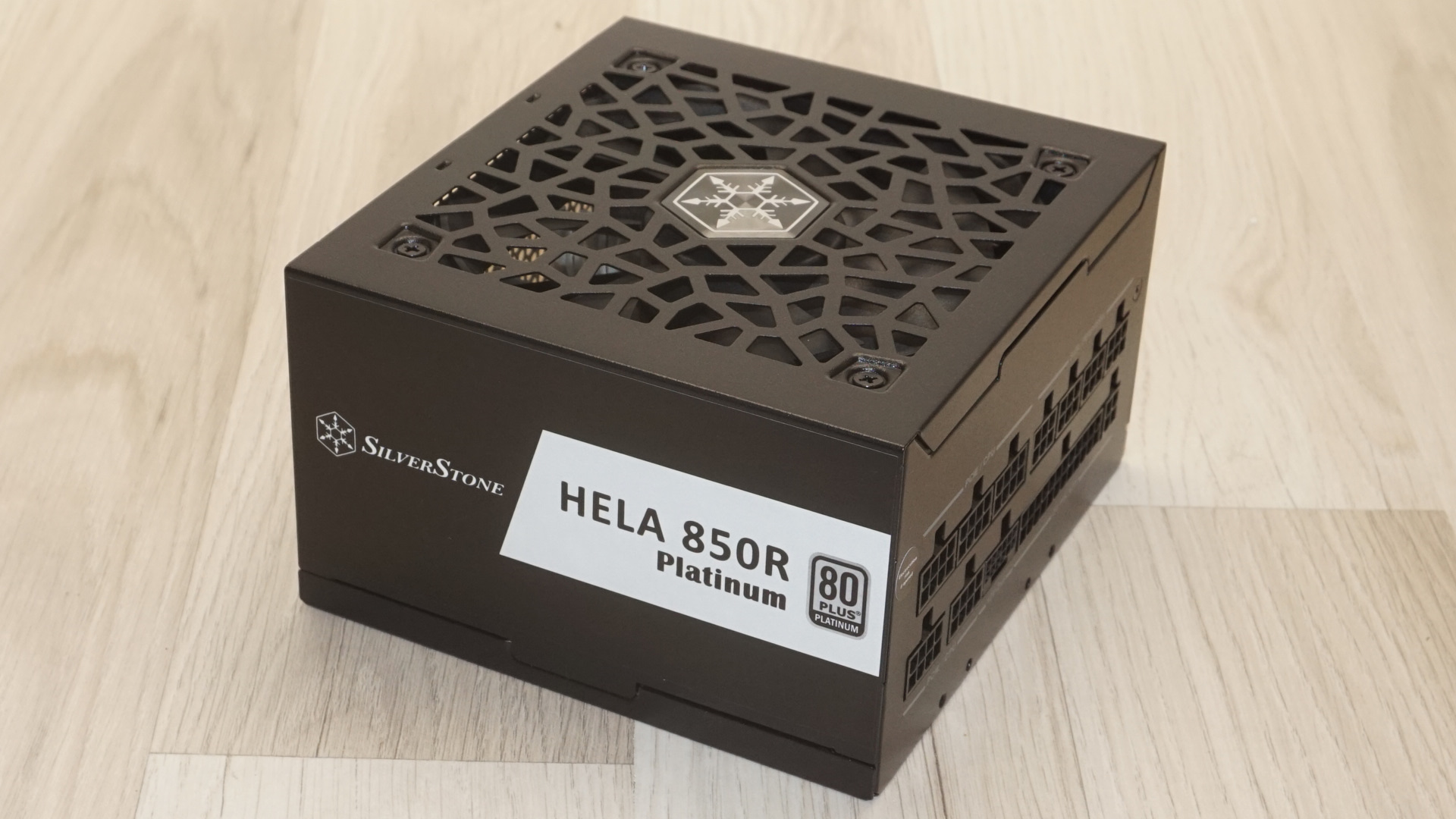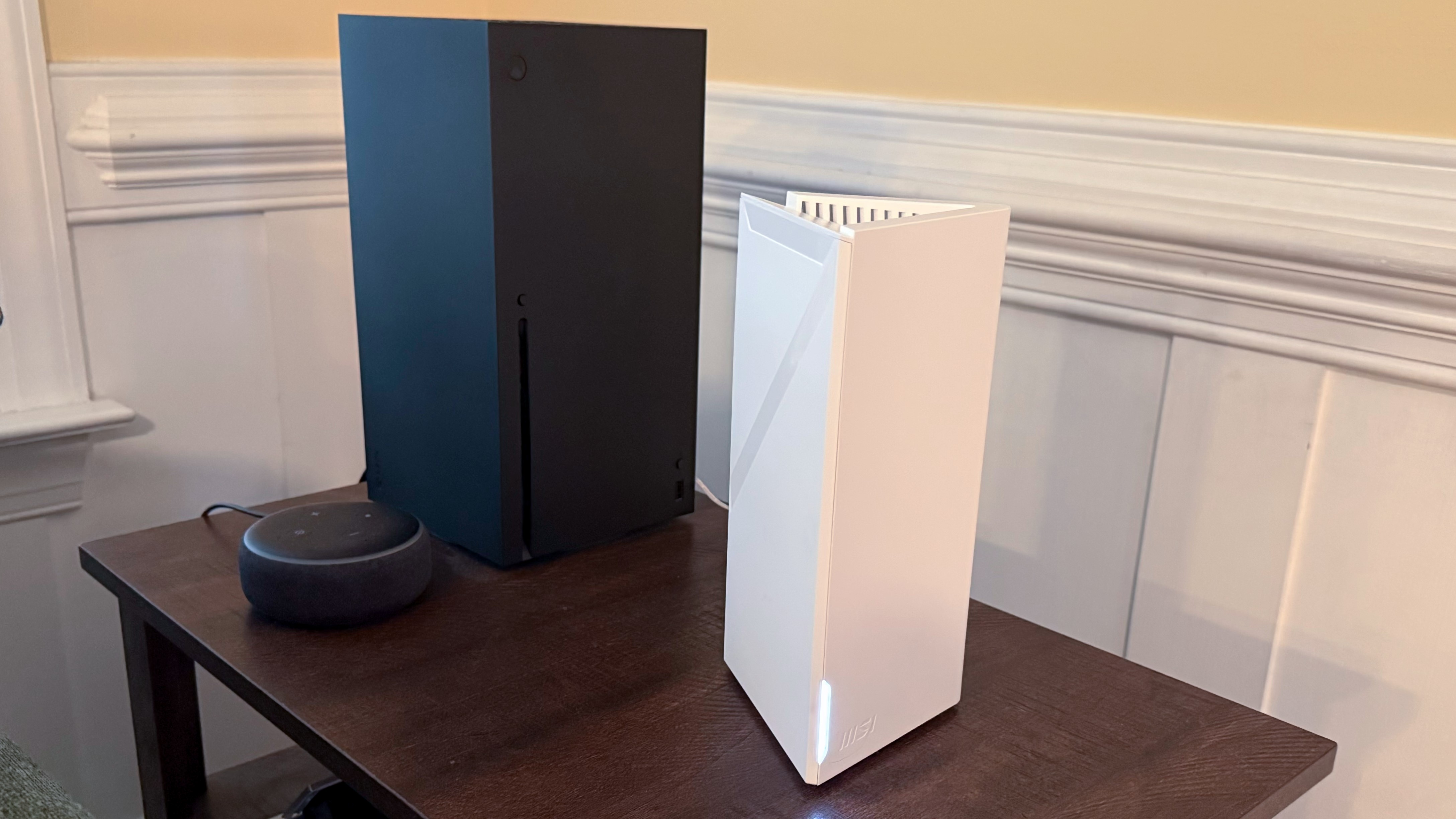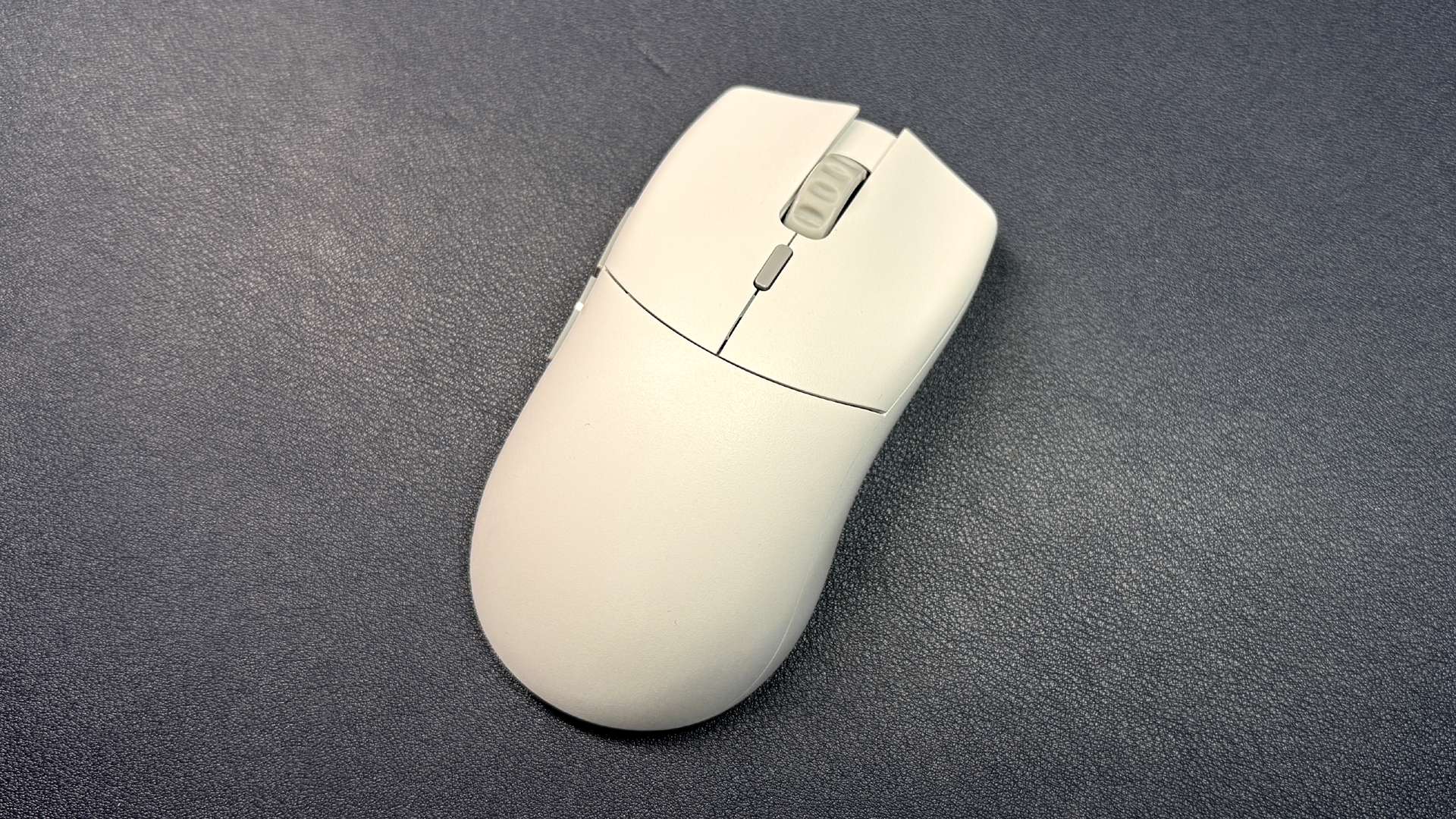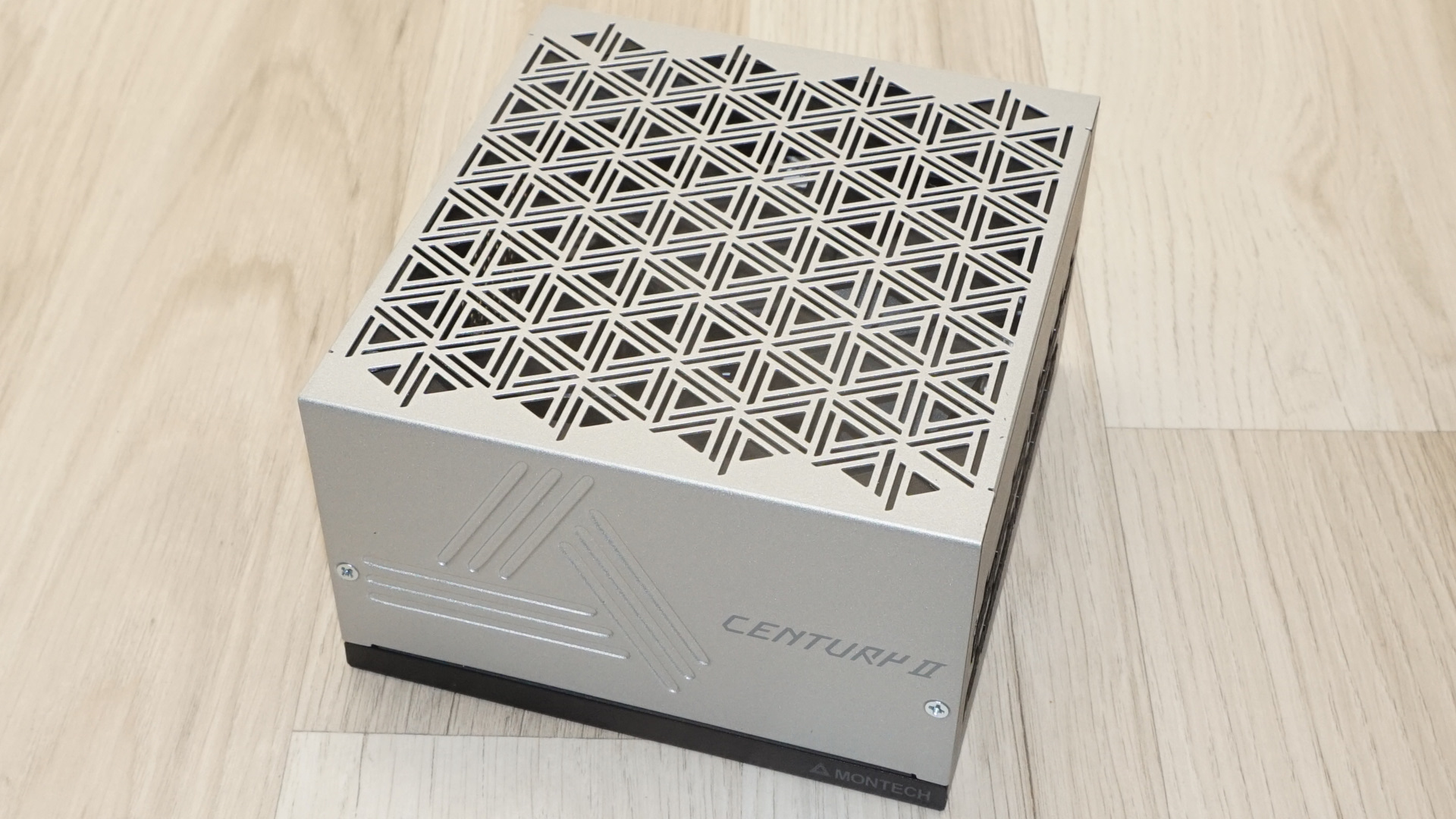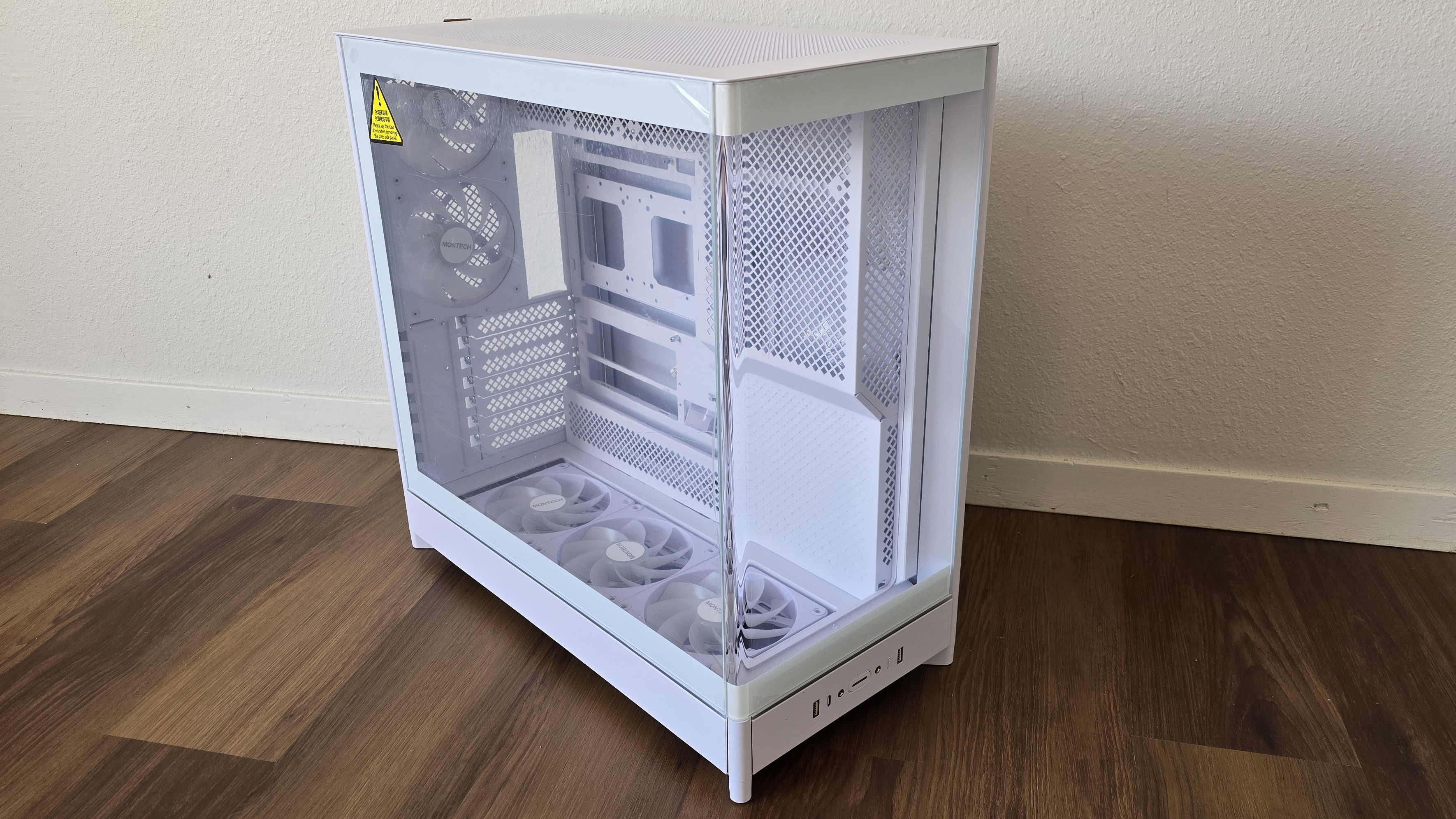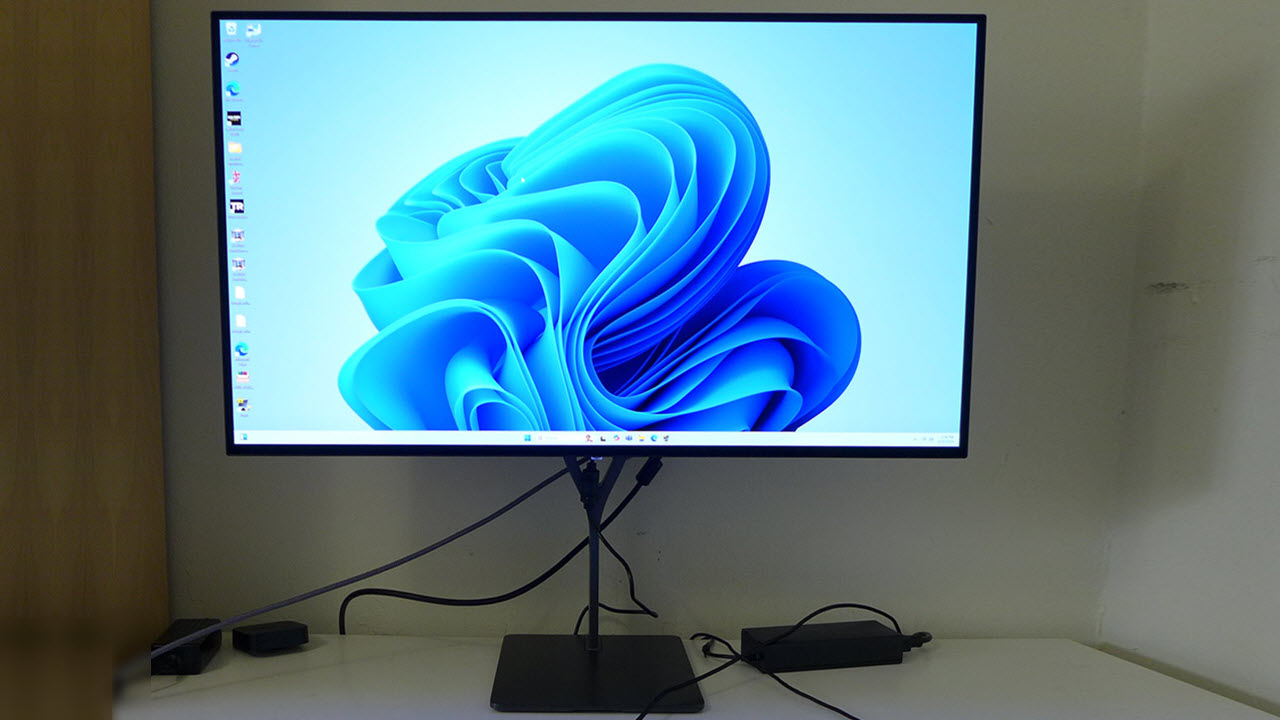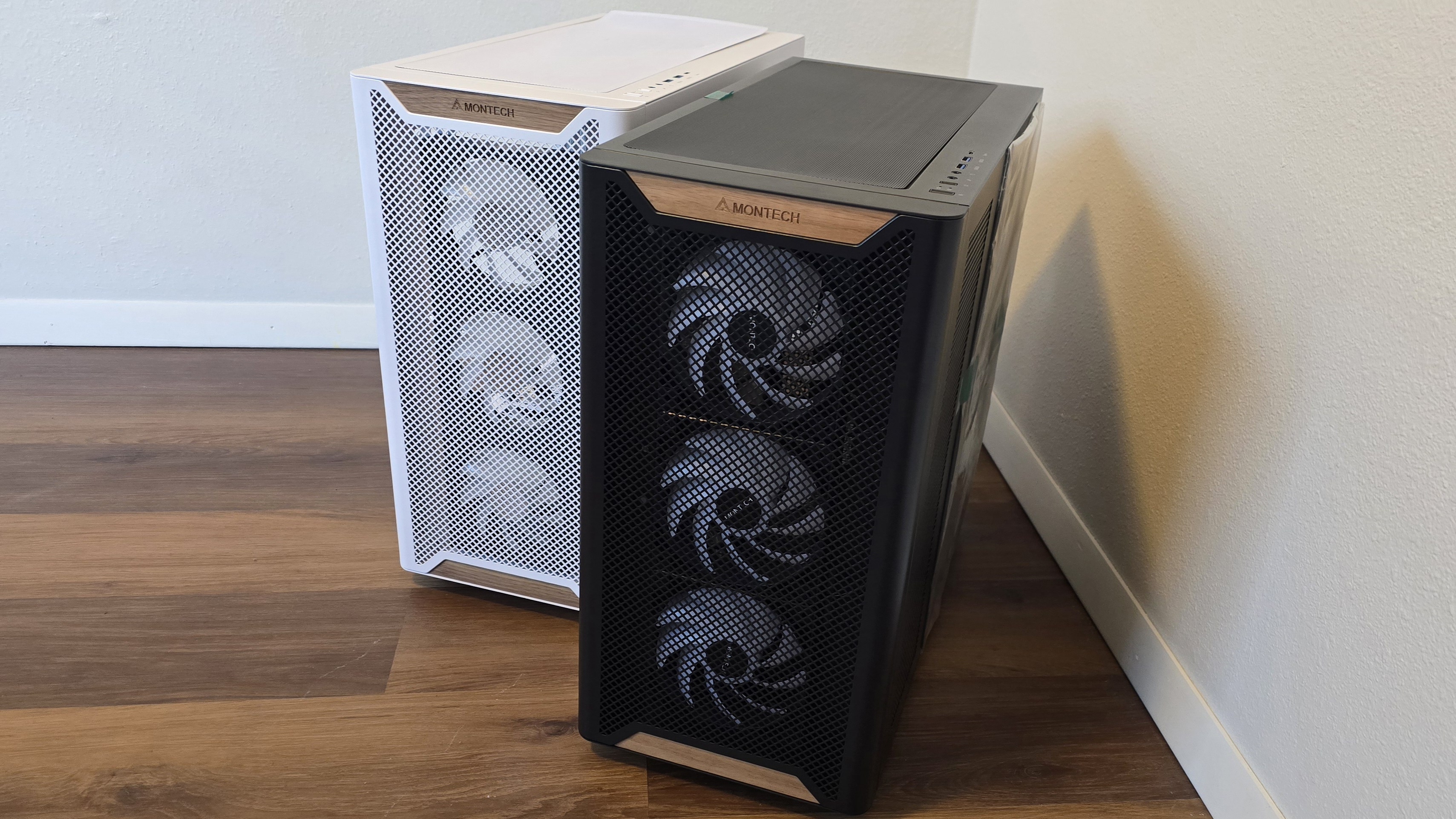Tom's Hardware Verdict
The Thermaltake Toughpower PF1 650W achieves high performance and has also a dead silent operation.
Pros
- +
Full power at 47 degrees Celsius
- +
High overall performance
- +
Efficient
- +
Highly efficient 5VSB rail
- +
Silent operation
- +
Long hold-up time
- +
Low inrush current with 115V
- +
Fully modular
- +
Adequate distance between the peripheral connectors
- +
10-year warranty
Cons
- -
Mediocre transient response at 12V
- -
No MOV in the transient filter
- -
High OCP at 3.3V
- -
Not fully compatible with the newest ATX spec (2.52)
Why you can trust Tom's Hardware
The Thermaltake Toughpower PF1 650W achieves top overall performance, despite its mediocre transient response at +12V, which is the most important rail of all. With better transient response at the aforementioned rail, it could be the king in the 650W category. Still, the PF1 650W manages to earn a place in our best PSU picks article. Its major opponent is the Seasonic Focus Plus Platinum, which manages to take the lead with a small difference in overall performance.
We have already evaluated two of the three Toughpower PF1 models, with 750W and 850W capacity, so we thought also to take a look at the smallest member of the line with 650W max power output. The Toughpower PF1 650W can support systems equipped with Nvidia RTX 3070/3060Ti or the AMD RX 6800, as long as you don't have installed other power-hungry components or a highly overclocked CPU. For the RTX 3080 and depending on the model, we would suggest an 850W power supply.
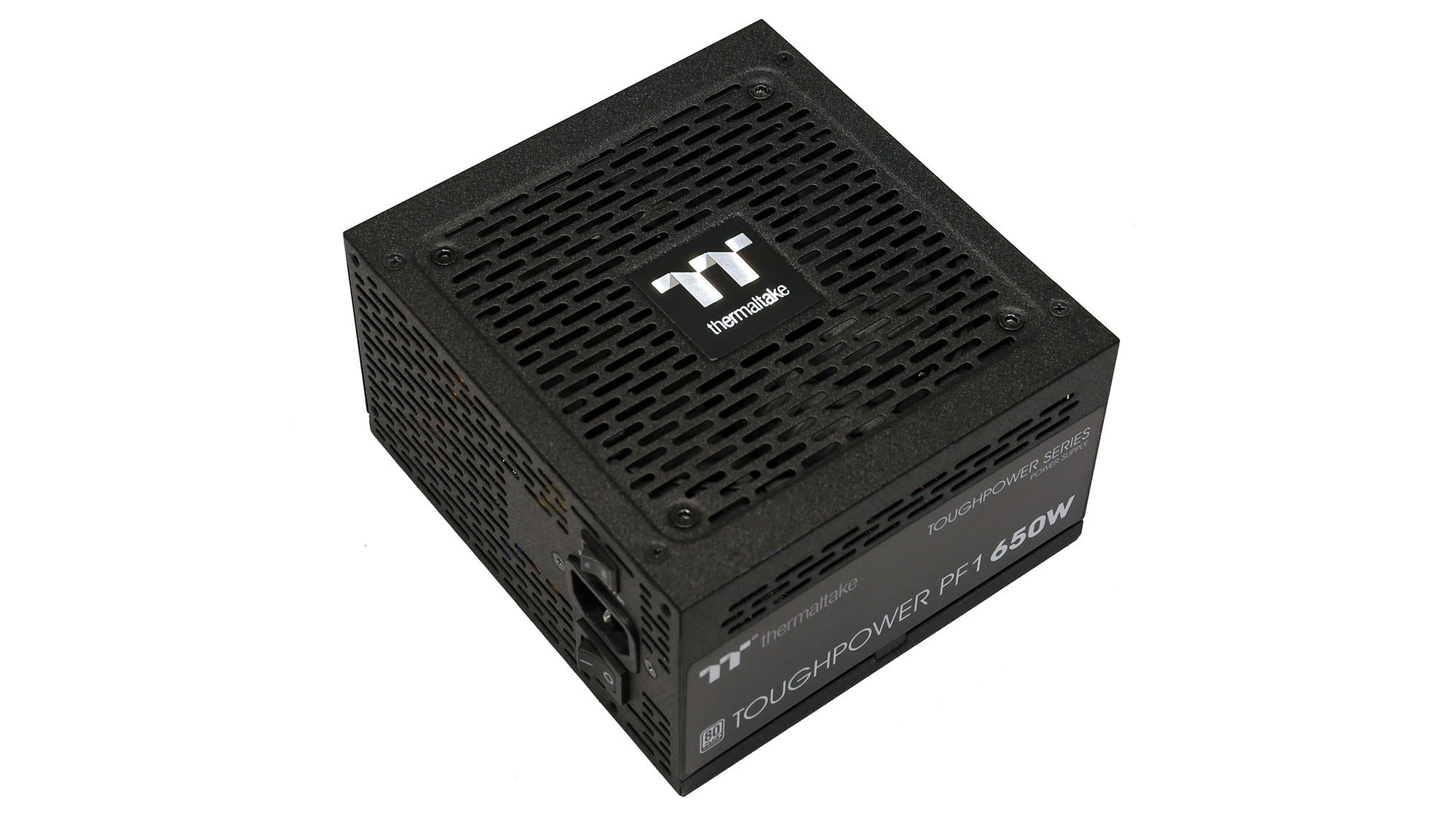
Product Photos
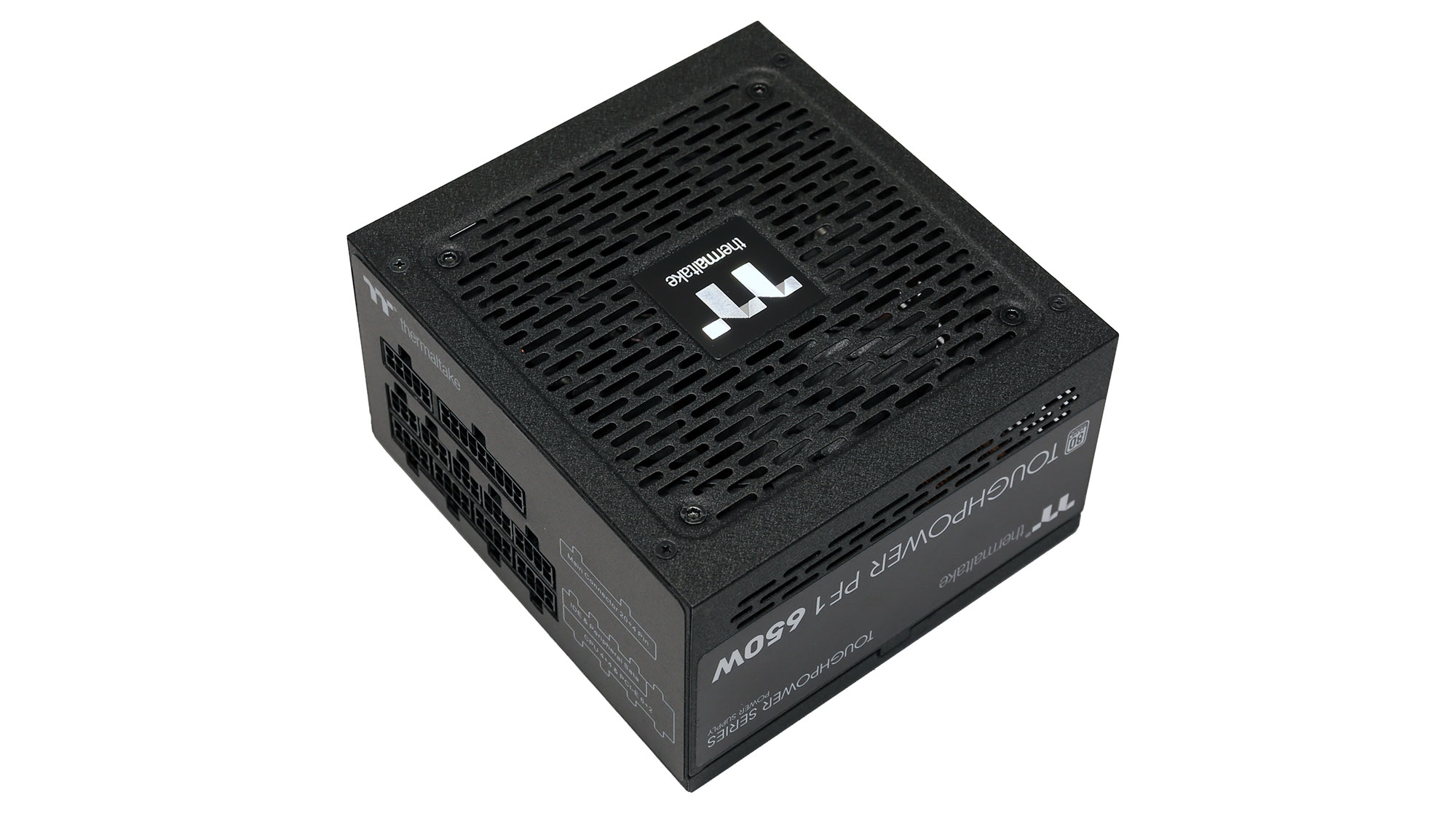
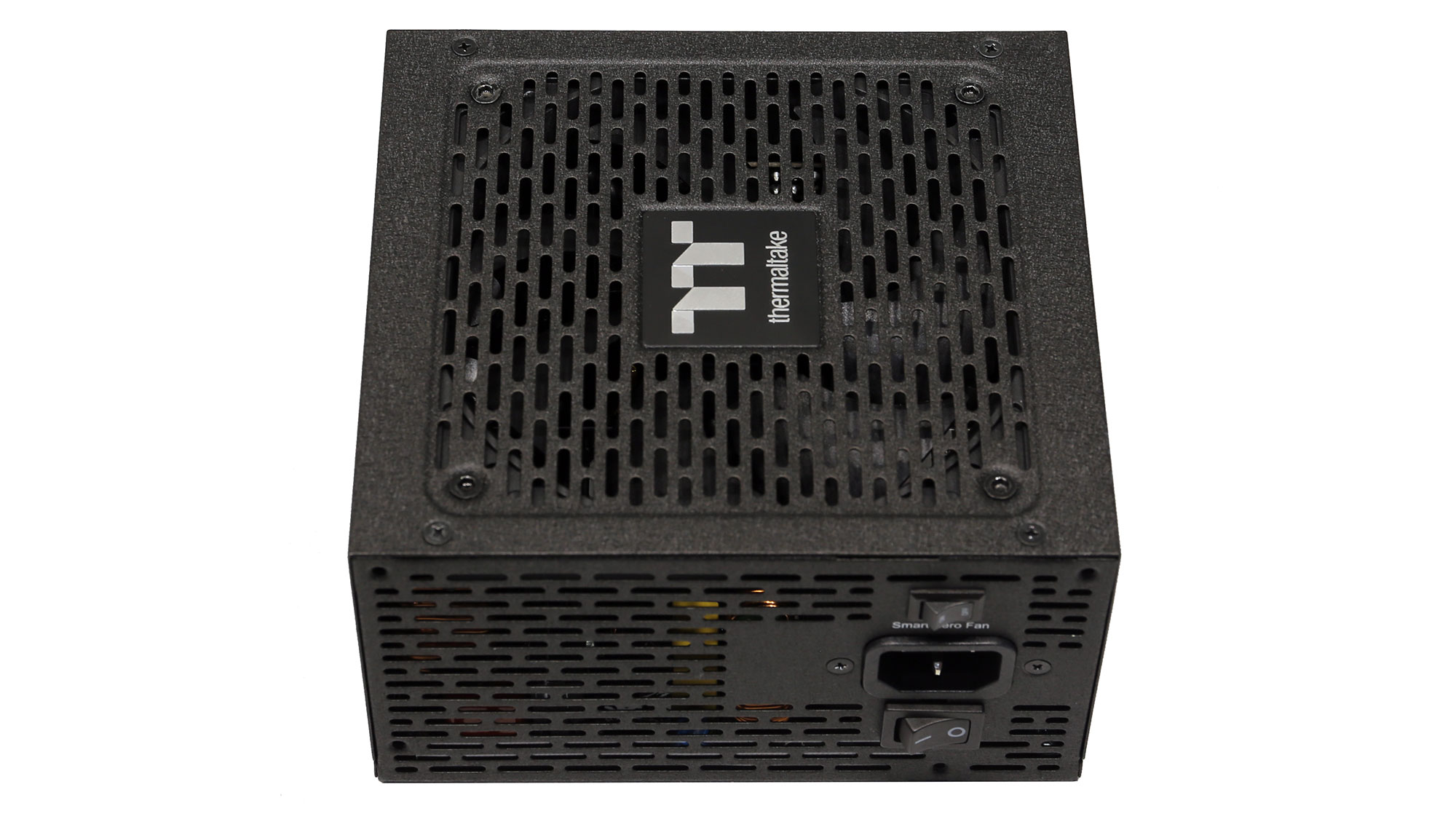
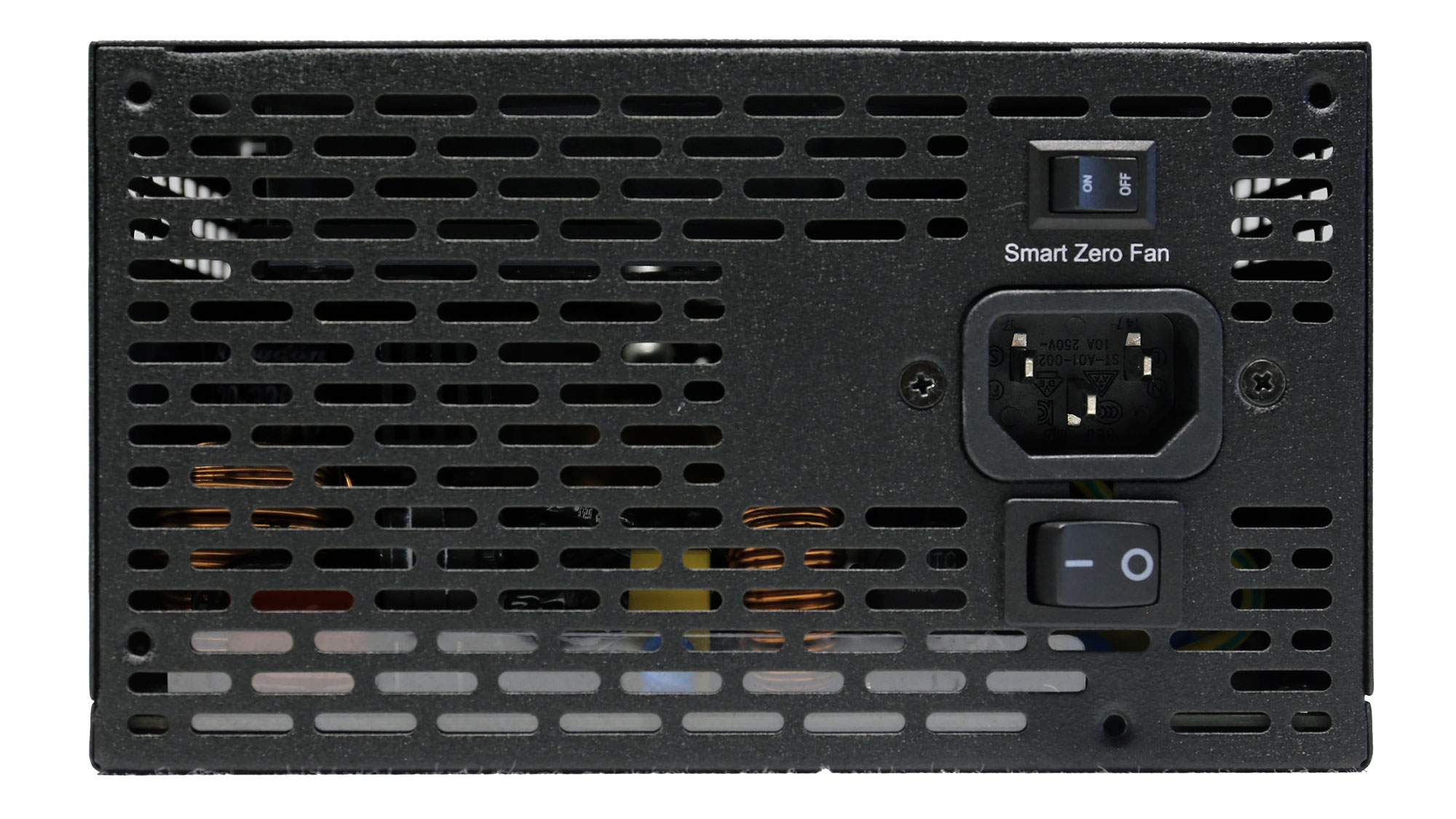

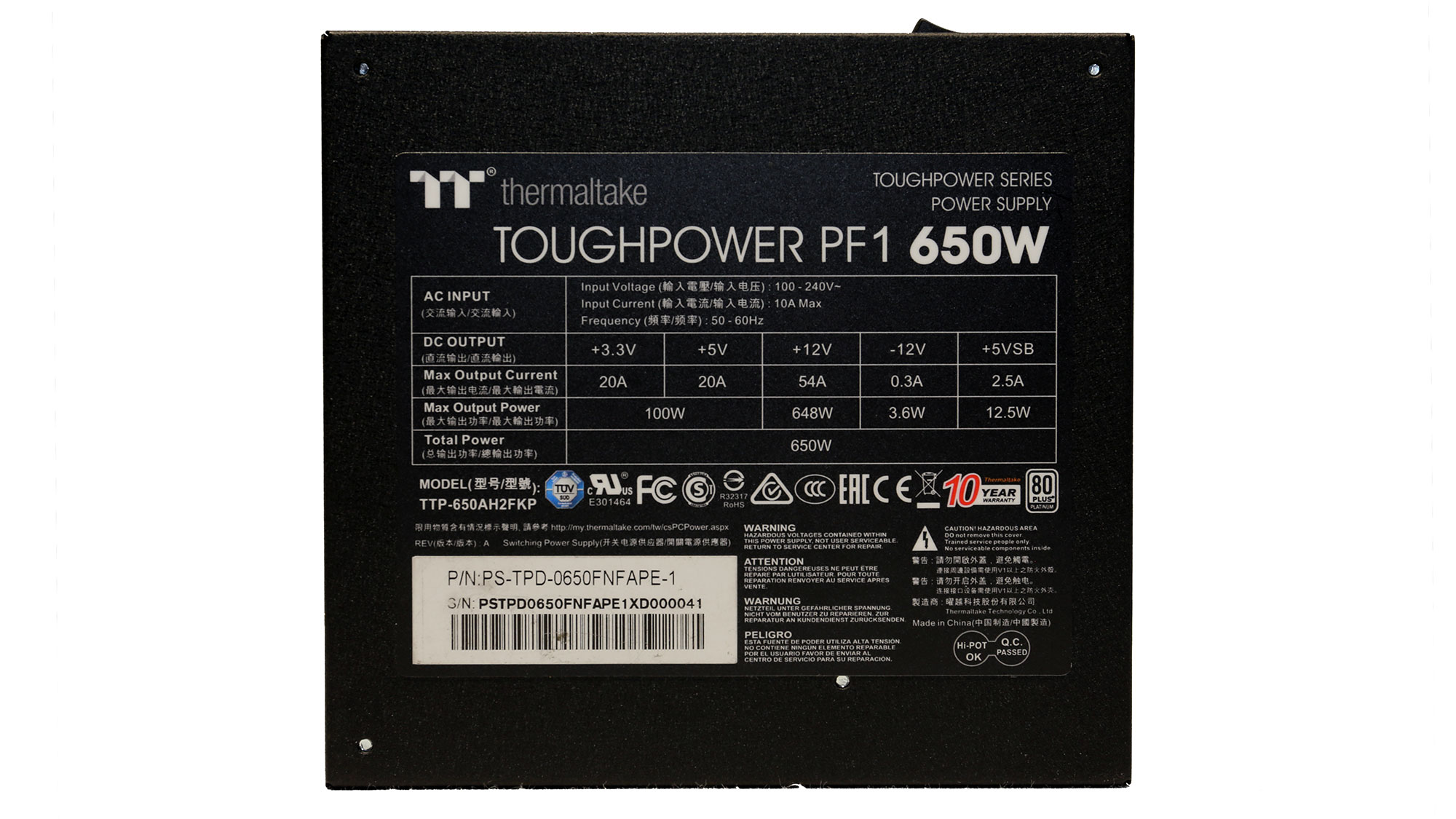
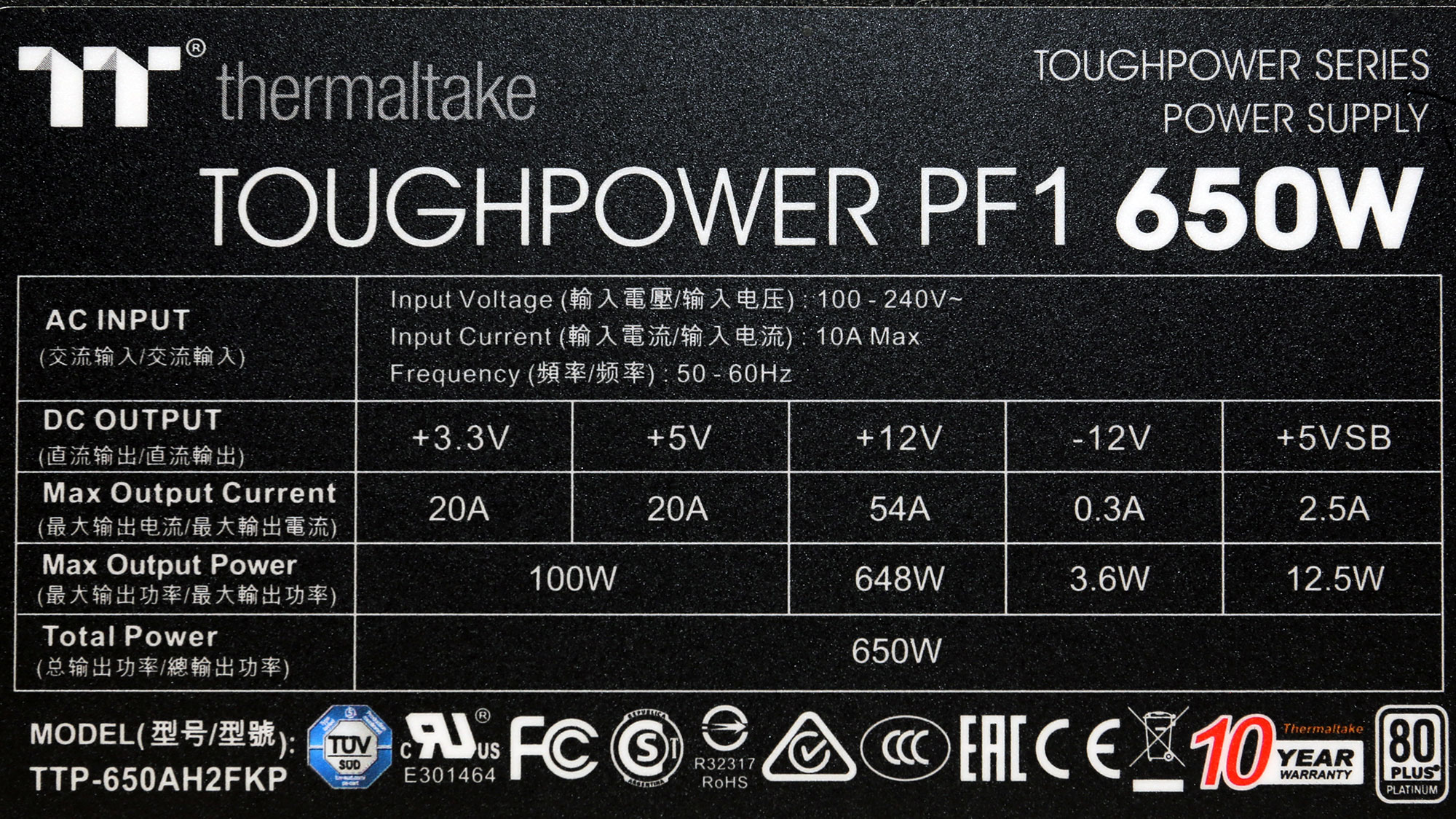
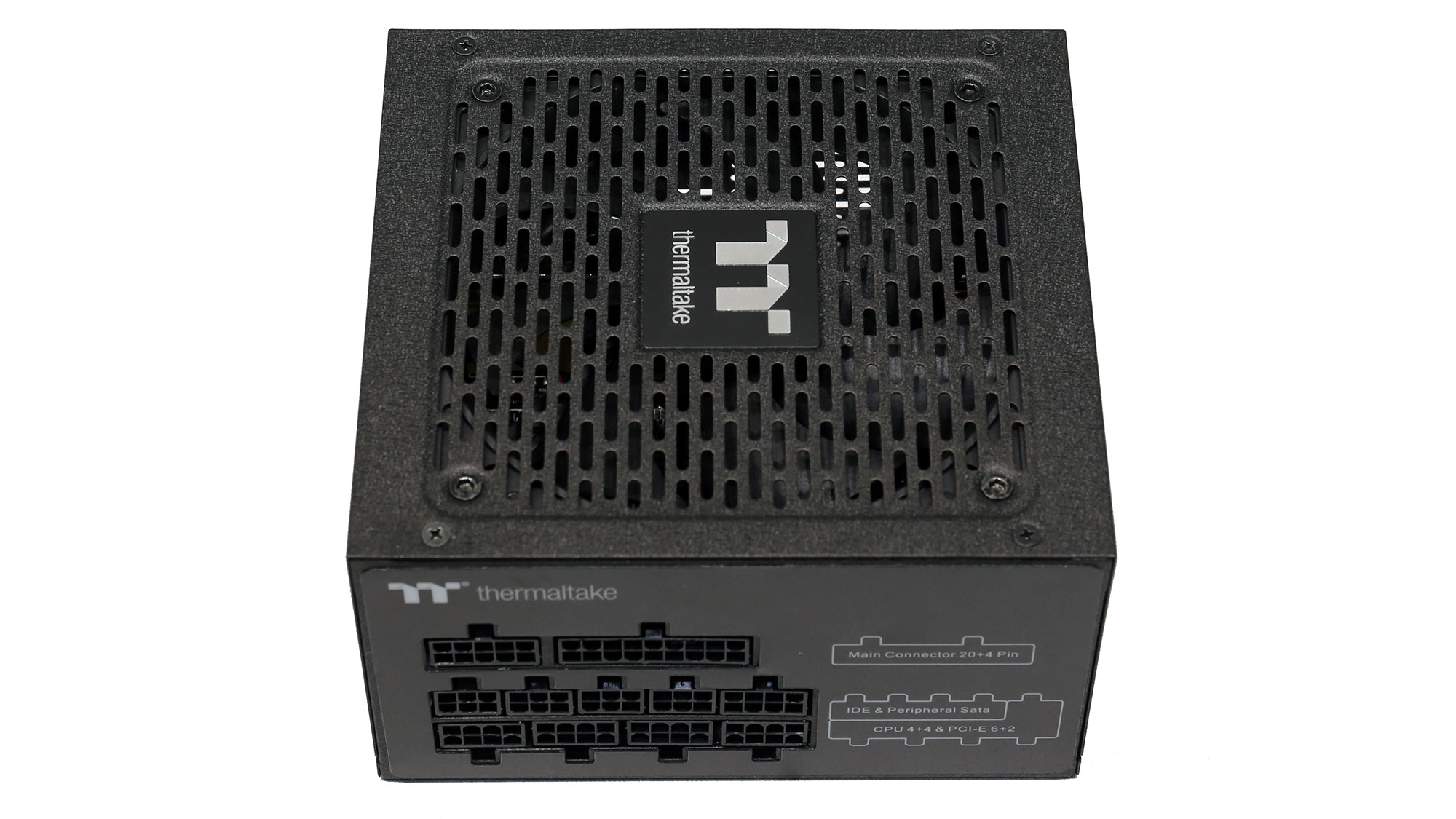

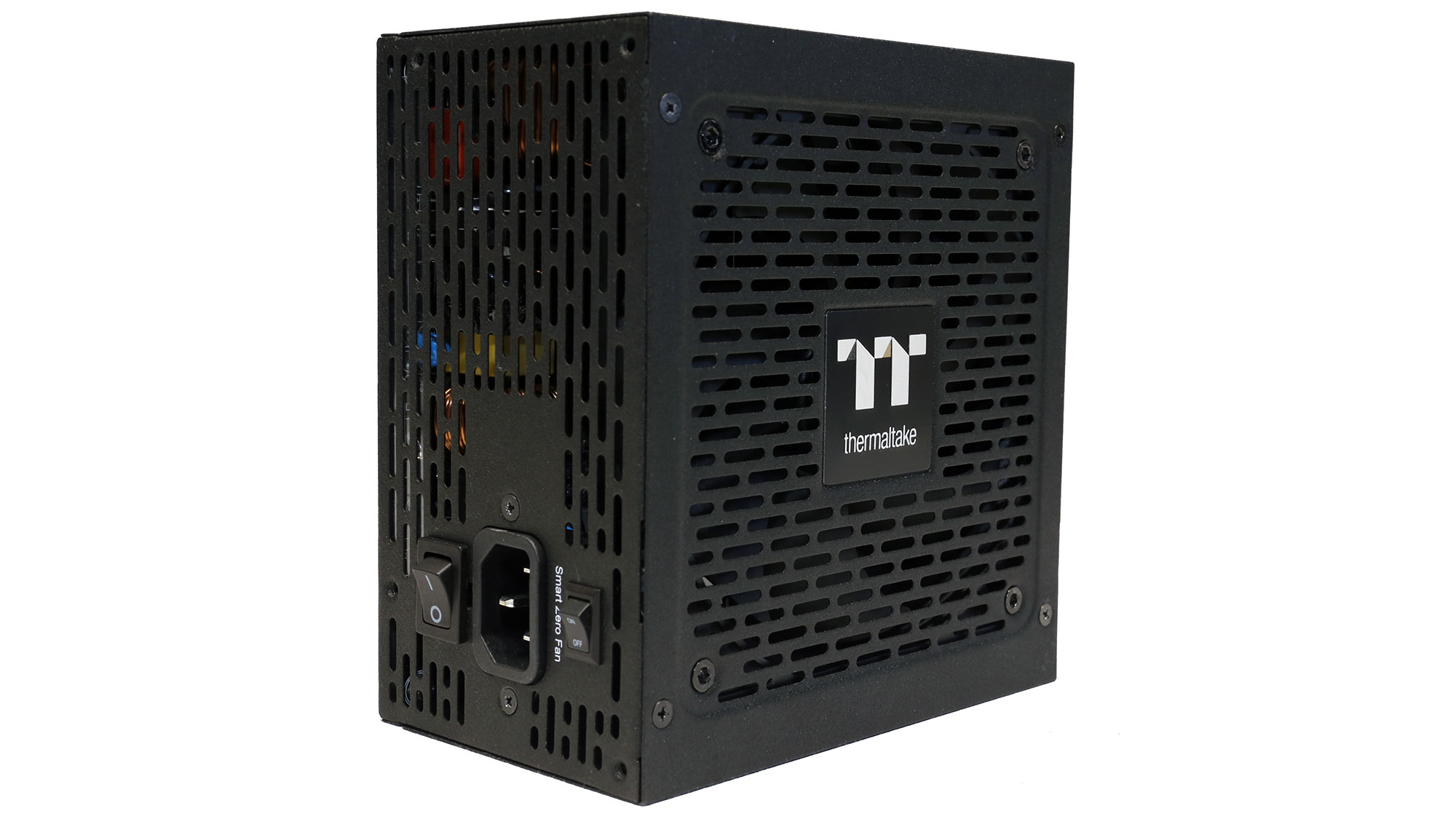
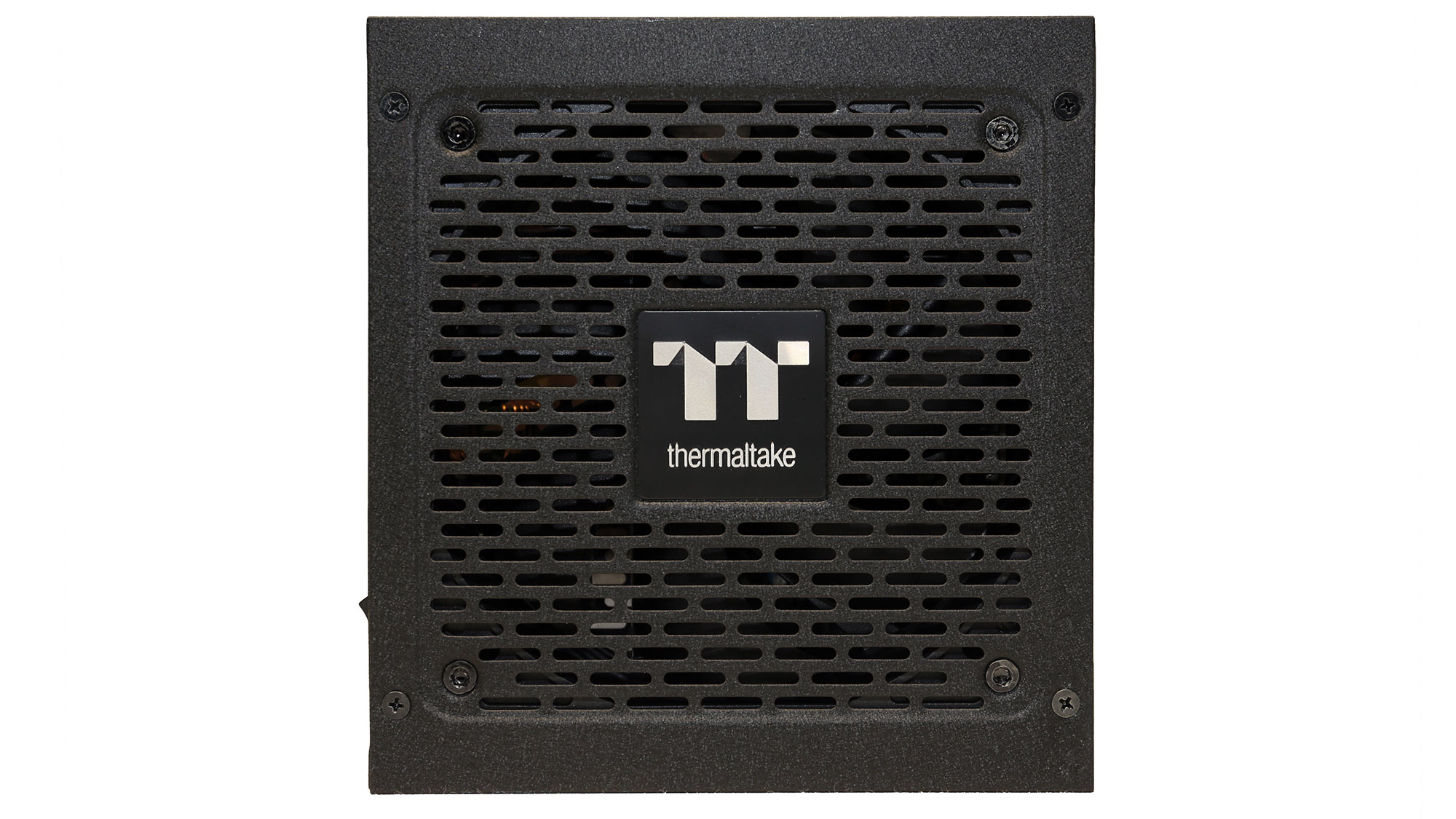

The Toughpower PF1 650W is a fully modular power supply, and like the other two of this line, it uses a platform provided by HKC. So far, this OEM didn't have much to show in the high-end category, so it is nice to see a new contender in this category where a handful of OEMs dominate the market. The PSU has compact dimensions, measuring only 140mm in length, and it is 80 PLUS Platinum, and ETA-A rated in the Cybenetics efficiency scale. It also has a LAMBDA-A noise certification, which translates to low noise output. Typically, the higher the efficiency rating, the lower the noise output since thermal loads are at low levels, so there is no need for aggressive fan speed profiles unless the manufacturer uses tiny heat sinks or/and low-quality components which need to be kept at as low as possible operating temperatures.

Product Photos
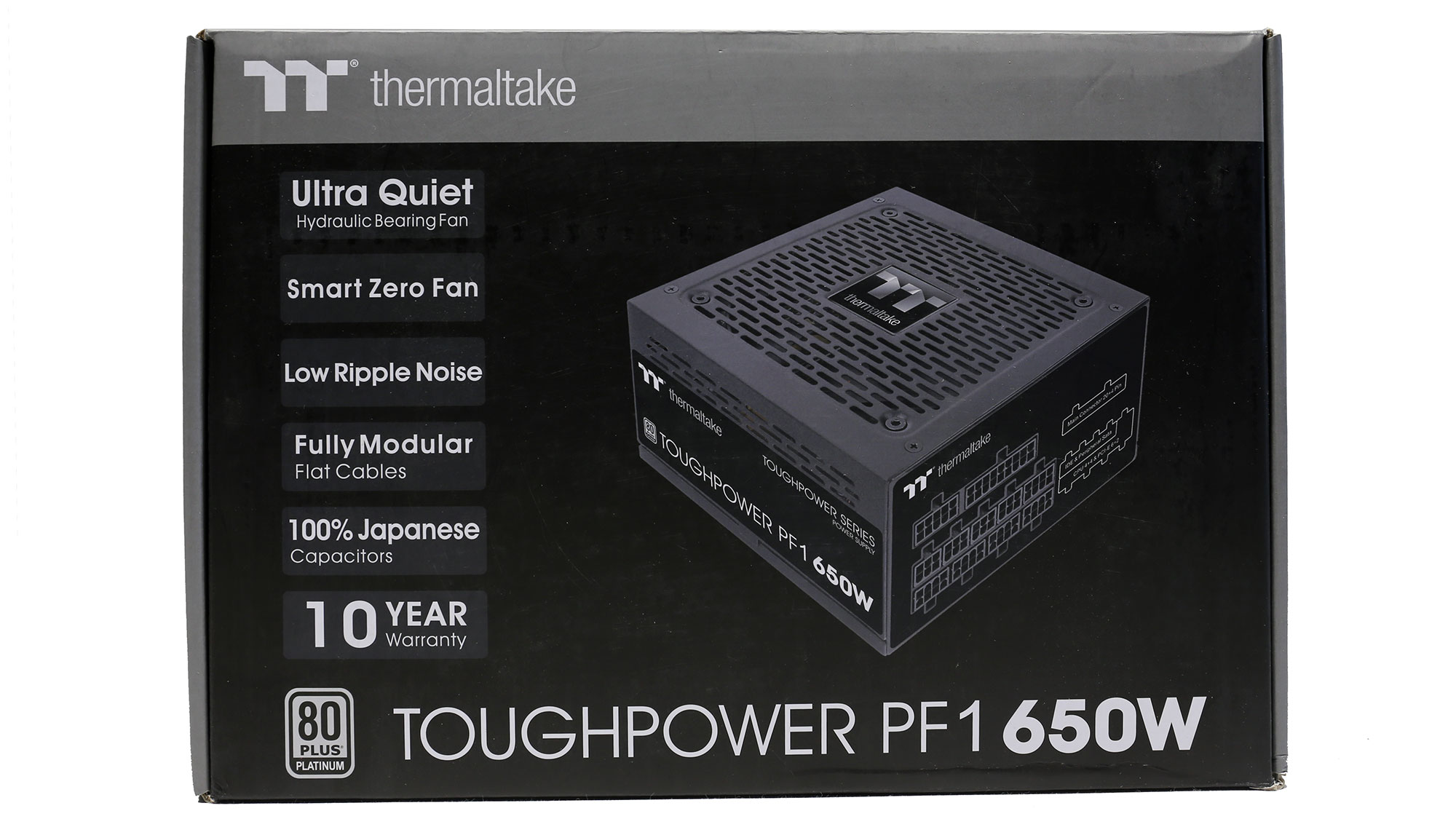




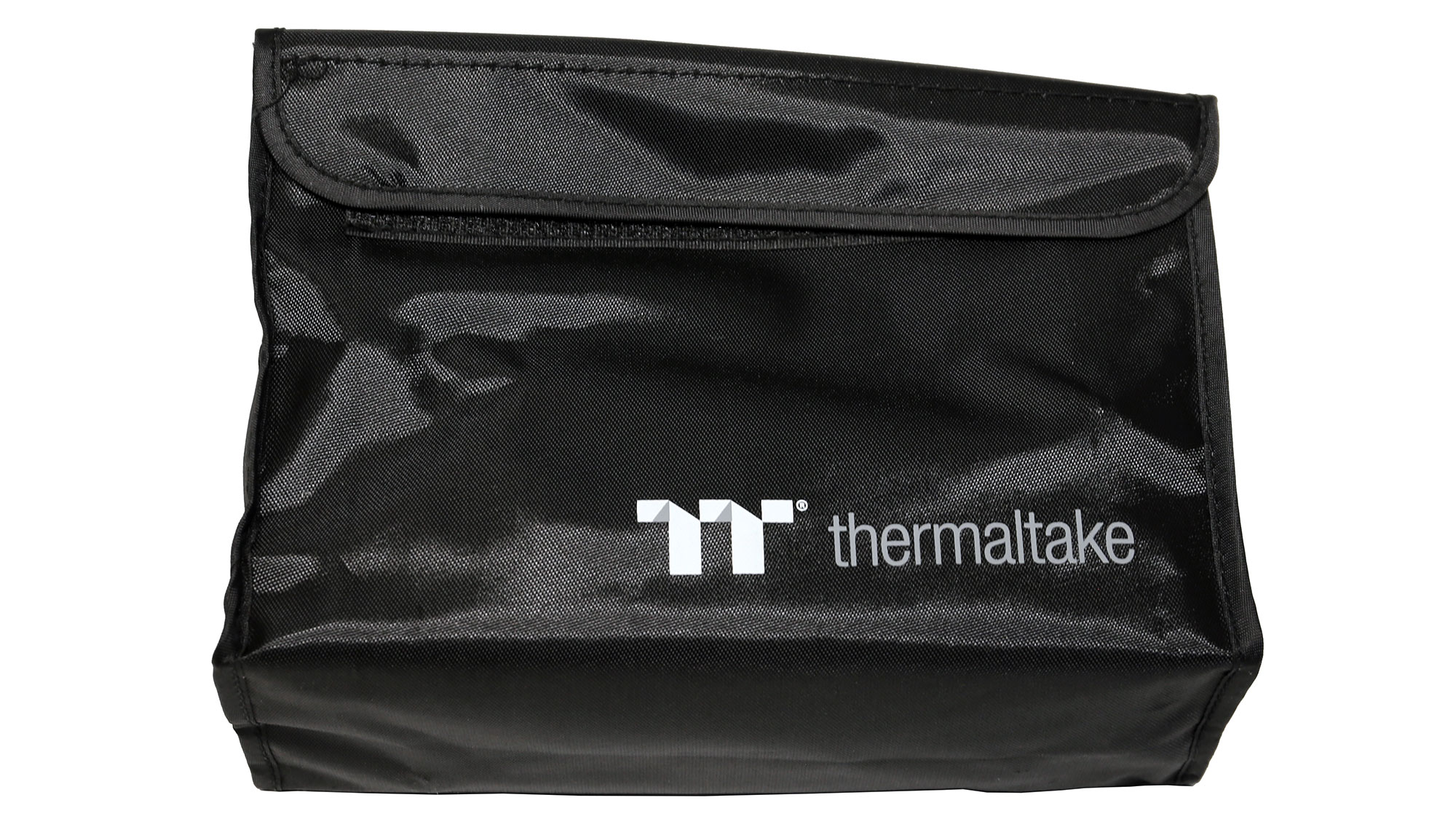
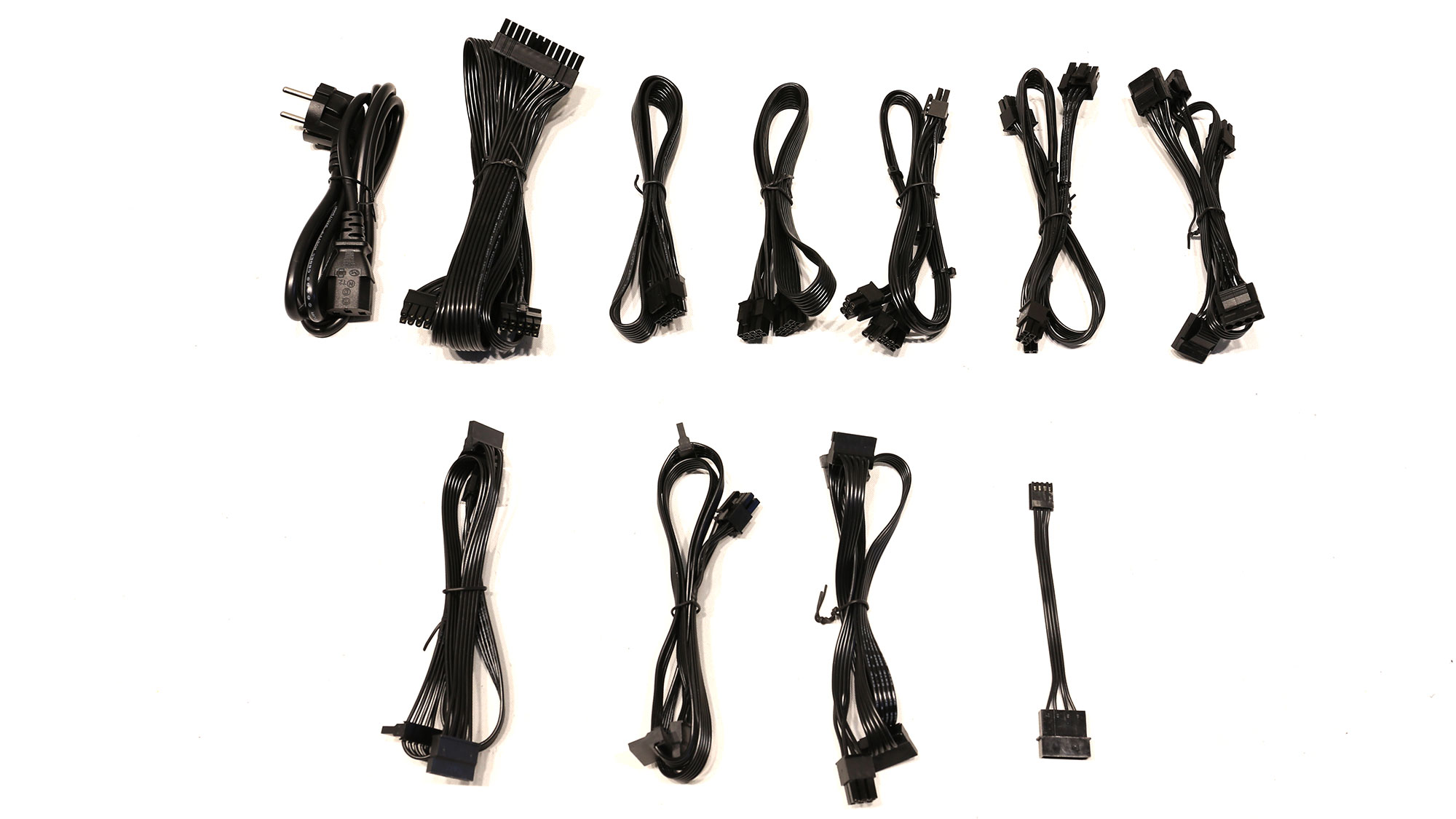
Specifications
|
Manufacturer (OEM) |
HKC |
|
Max. DC Output |
650W |
|
Efficiency |
80 PLUS Platinum, ETA-A (88-91%) |
|
Noise |
LAMBDA-A (20-25 dB[A]) |
|
Modular |
✓ (Fully) |
|
Intel C6/C7 Power State Support |
✓ |
|
Operating Temperature (Continuous Full Load) |
0 - 50°C |
|
Over Voltage Protection |
✓ |
|
Under Voltage Protection |
✓ |
|
Over Power Protection |
✓ |
|
Over Current (+12V) Protection |
✓ |
|
Over Temperature Protection |
✓ |
|
Short Circuit Protection |
✓ |
|
Surge Protection |
✓ |
|
Inrush Current Protection |
✓ |
|
Fan Failure Protection |
✗ |
|
No Load Operation |
✓ |
|
Cooling |
120mm Hydraulic Bearing Fan [TT-1225(XW12025MS)] |
|
Semi-Passive Operation |
✓ (selectable) |
|
Dimensions (W x H x D) |
150 x 85 x 140mm |
|
Weight |
1.24 kg (2.73 lb) |
|
Form Factor |
ATX12V v2.4, EPS 2.92 |
|
Warranty |
10 Years |
Power Specifications
| Rail | 3.3V | 5V | 12V | 5VSB | -12V | |
|---|---|---|---|---|---|---|
| Max. Power | Amps | 20 | 20 | 62.5 | 2.5 | 0.3 |
| Watts | 100 | 648 | 12.5 | 3.6 | ||
| Total Max. Power (W) | 650 |
Cables & Connectors
| Modular Cables | Cable Count | Connector Count (Total) | Gauge | In Cable Capacitors |
|---|---|---|---|---|
| ATX connector 20+4 pin (600mm) | 1 | 1 | 16-18AWG | No |
| 4+4 pin EPS12V (650mm) | 2 | 2 | 16AWG | No |
| 6+2 pin PCIe (500mm+150mm) | 2 | 4 | 16-18AWG | No |
| SATA (480mm+150mm+150mm) | 3 | 9 | 18AWG | No |
| 4-pin Molex (480mm+150mm+150mm+150mm) | 1 | 4 | 18AWG | No |
| FDD Adapter (+100mm) | 1 | 1 | 22AWG | No |
| AC Power Cord (1400mm) - C13 coupler | 1 | 1 | 18AWG | No |
There are enough cables and connectors, including two EPS and four PCIe. Cable length is satisfactory, and the distance between the peripheral connectors is adequate at 150mm. Finally, there are no in-line caps on the cables, which can be a major pain during cable routing and management.

Cable Photos


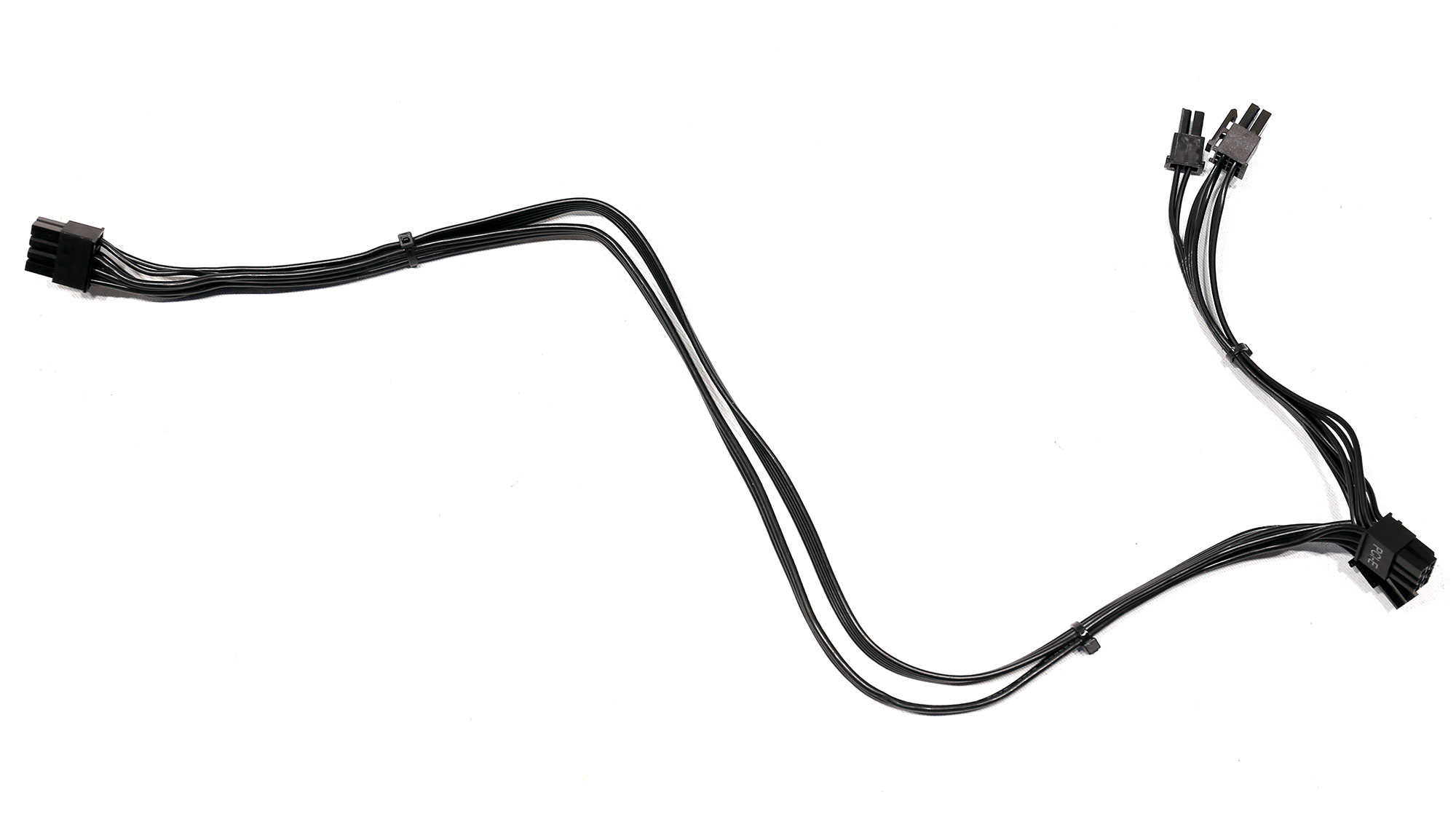
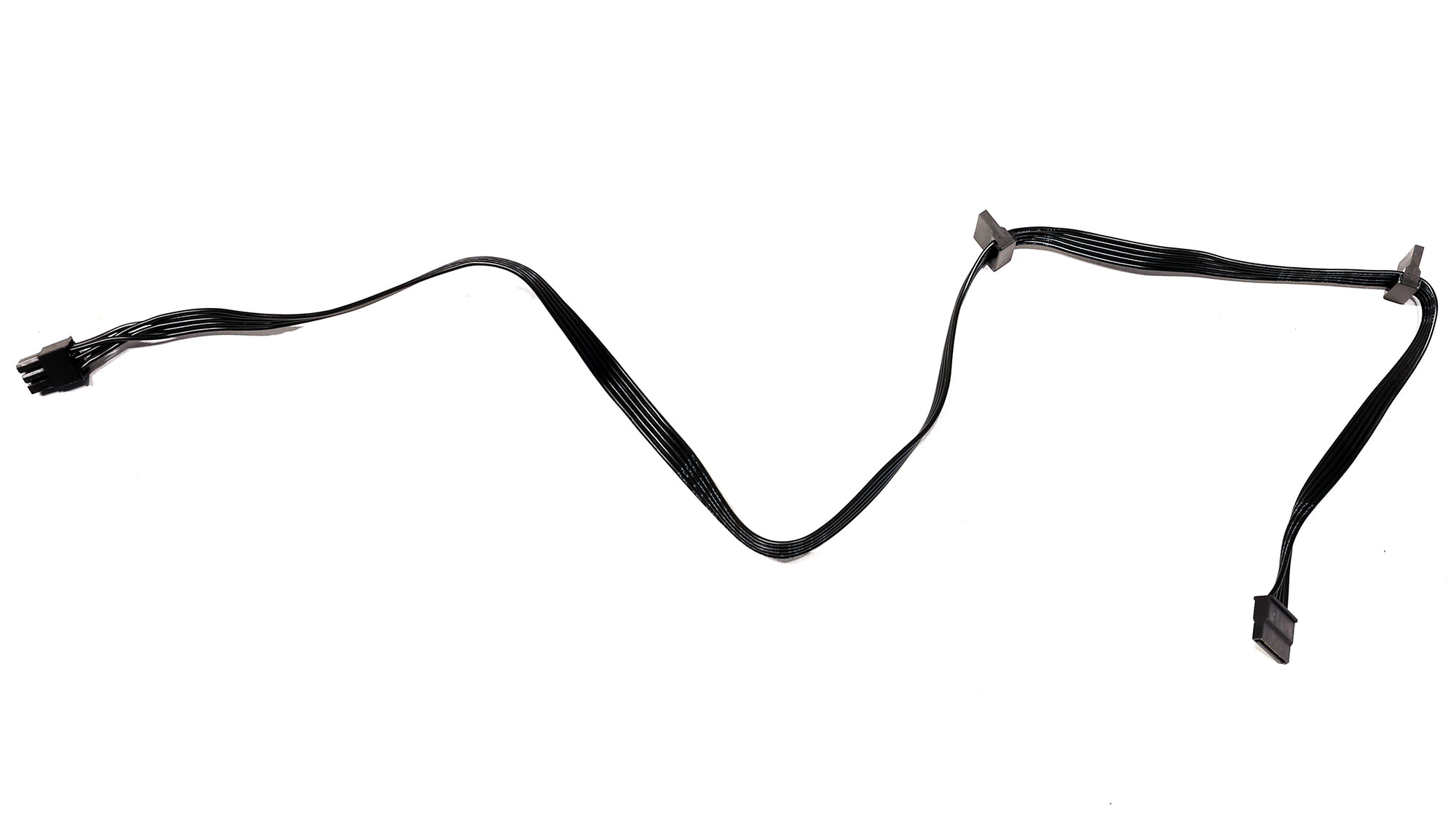
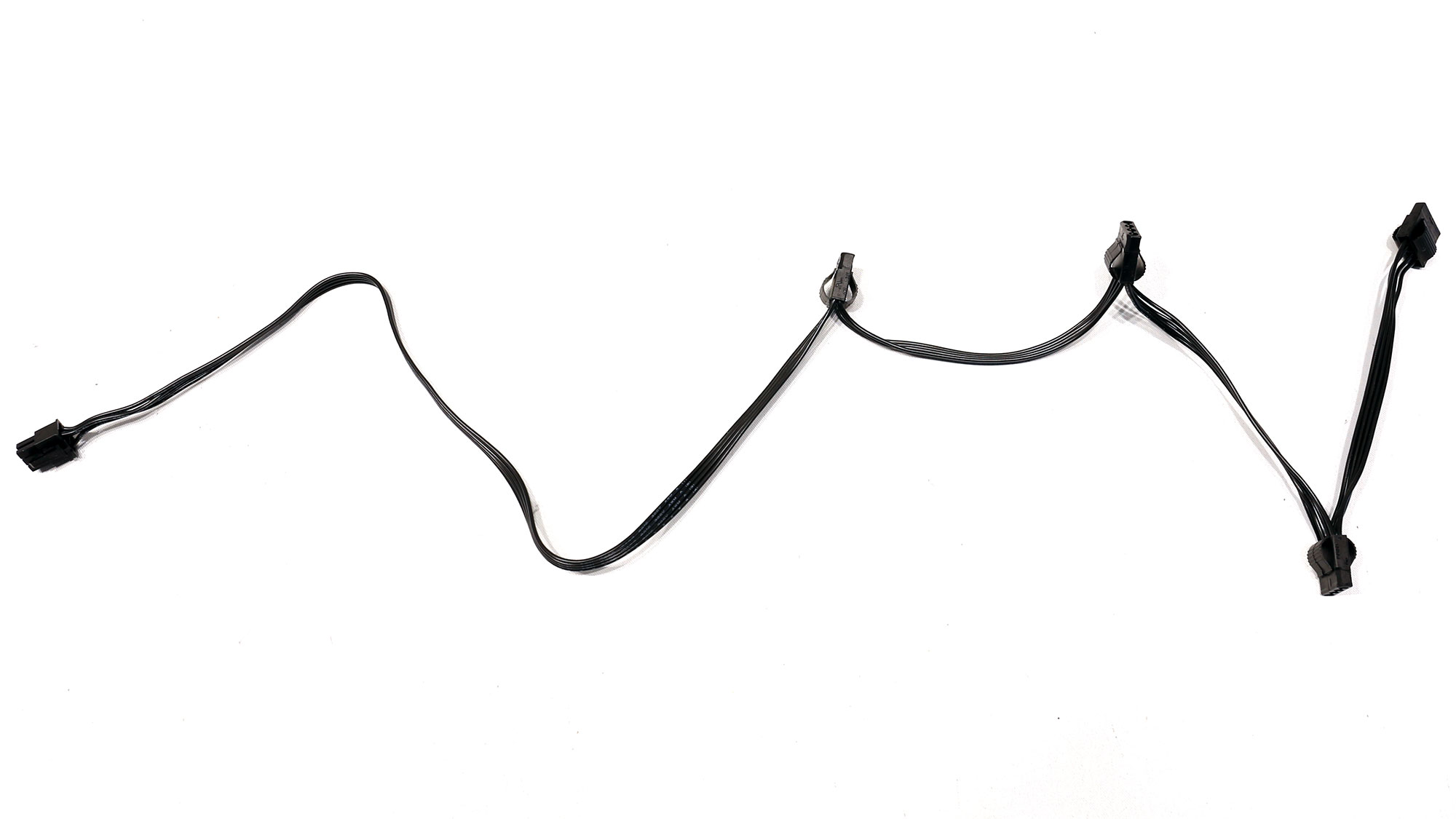
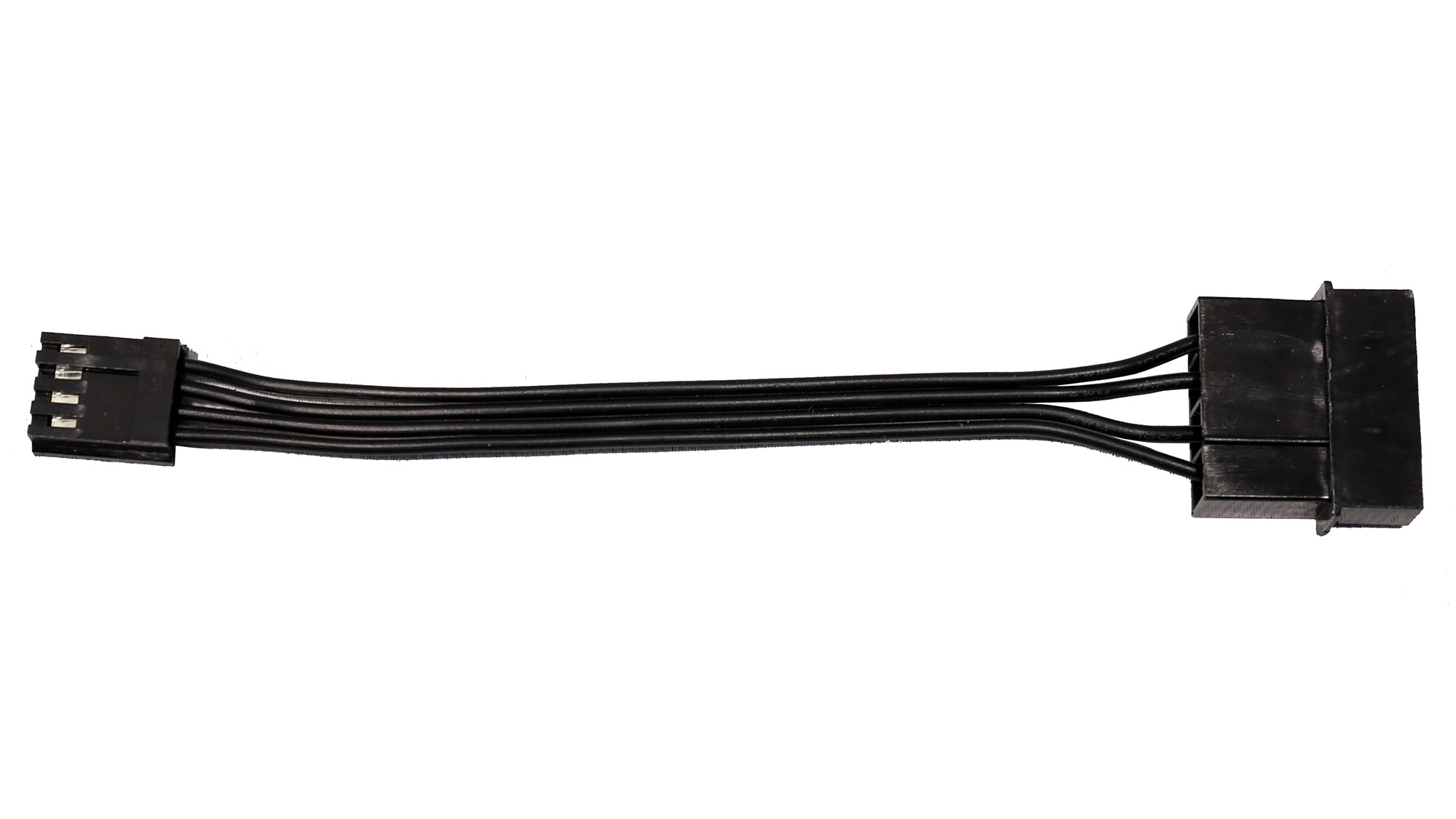
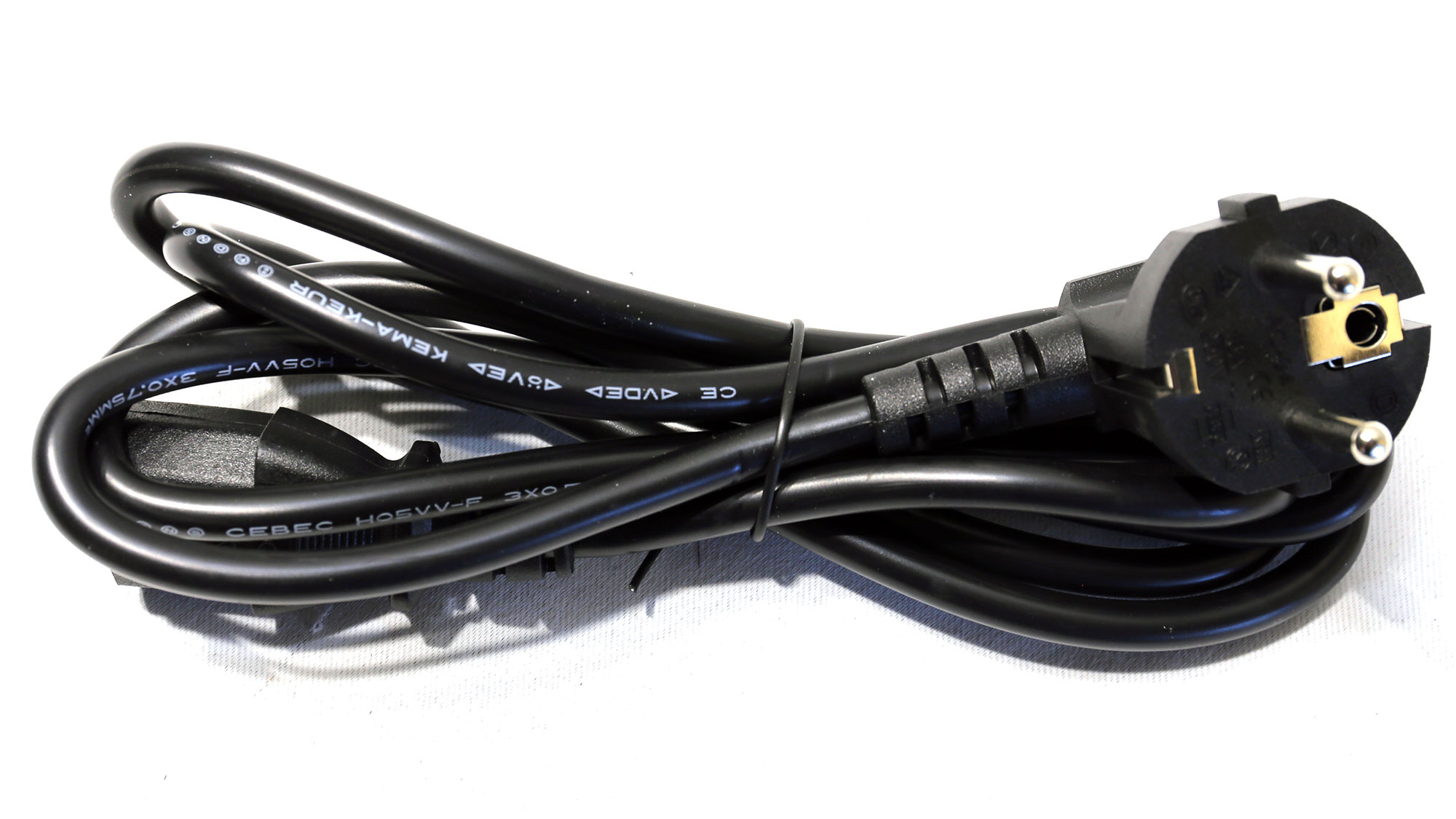
Component Analysis
We strongly encourage you to have a look at our PSUs 101 article, which provides valuable information about PSUs and their operation, allowing you to better understand the components we're about to discuss.
| - | General Information |
| Manufacturer (OEM) | HKC |
| PCB Type | Double Sided |
| - | Primary Side |
| Transient Filter | 6x Y caps, 2x X caps, 2x CM chokes |
| Inrush Protection | NTC Thermistor 2.5D-15 (2.5Ohm) & Relay |
| Bridge Rectifier(s) | 2x GBU1506L (600V, 15A @ 100°C) |
| APFC MOSFETs | 2x NCE Power NCE65TF130F (650V, 18A @ 100°C, Rds(on): 0.13Ohm) |
| APFC Boost Diode | 1x Global Power Technology G3S06004J (600V, 4A @ 150°C) |
| Bulk Cap(s) | 2x Rubycon (420V, 330uF each or 660uF combined, 2,000h @ 105°C, MXH) |
| Main Switchers | 2x NCE Power NCE65TF130F (650V, 18A @ 100°C, Rds(on): 0.13Ohm) |
| APFC Controller | Champion CM6500UNX |
| Resonant Controller | Champion CM6901X |
| Topology | Primary side: APFC, Half-Bridge & LLC converter Secondary side: Synchronous Rectification & DC-DC converters |
| - | Secondary Side |
| +12V MOSFETs | 6x Advanced Power AP4N1R8CMT-A (45V, 32A @ 70°C, Rds(on): 1.8mOhm) |
| 5V & 3.3V | DC-DC Converters: 4x Advanced Power AP4024GEMT (30V, 20.9A @ 70°C, Rds(on): 4.5mOhm) PWM Controllers: 2x ANPEC APW7164 |
| Filtering Capacitors | Electrolytic: 1x Nippon Chemi-Con (4-10,000h @ 105°C, KY), 5x Nippon Chemi-Con (1-5,000h @ 105°C, KZE) Polymer: 21x NIC |
| Supervisor IC | Sitronix ST9S313-DAG (OVP, UVP, SCP) |
| Fan Model | Thermaltake TT-1225 (XW12025MS) (120mm, 12V, 0.30A, Hydraulic Bearing Fan) |
| - | 5VSB Circuit |
| Rectifier | 1x SB1045L SBR (45V, 10A) |
| Standby PWM Controller | Excelliance MOS Corporation EM8564A |
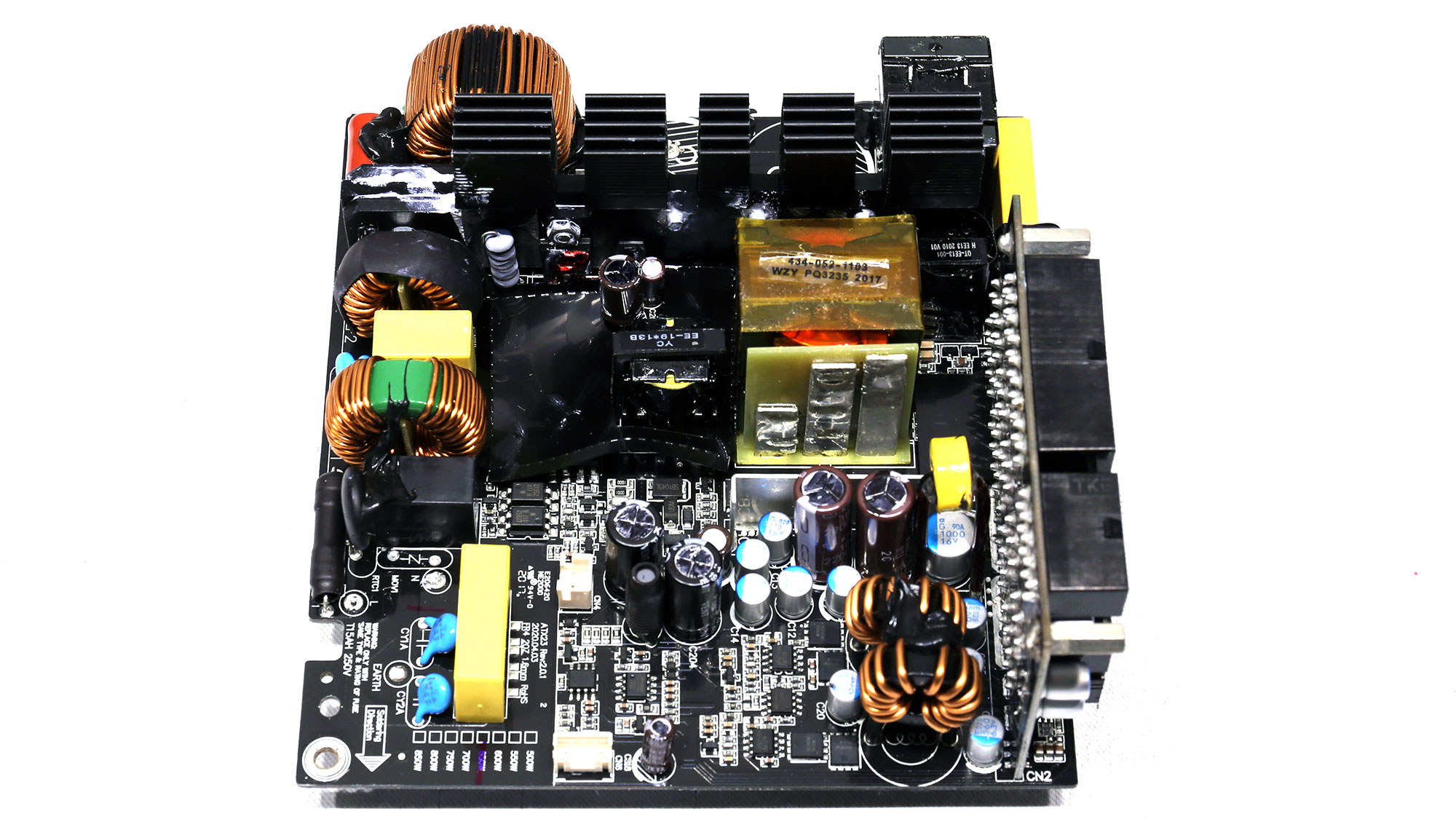
Overall Photos

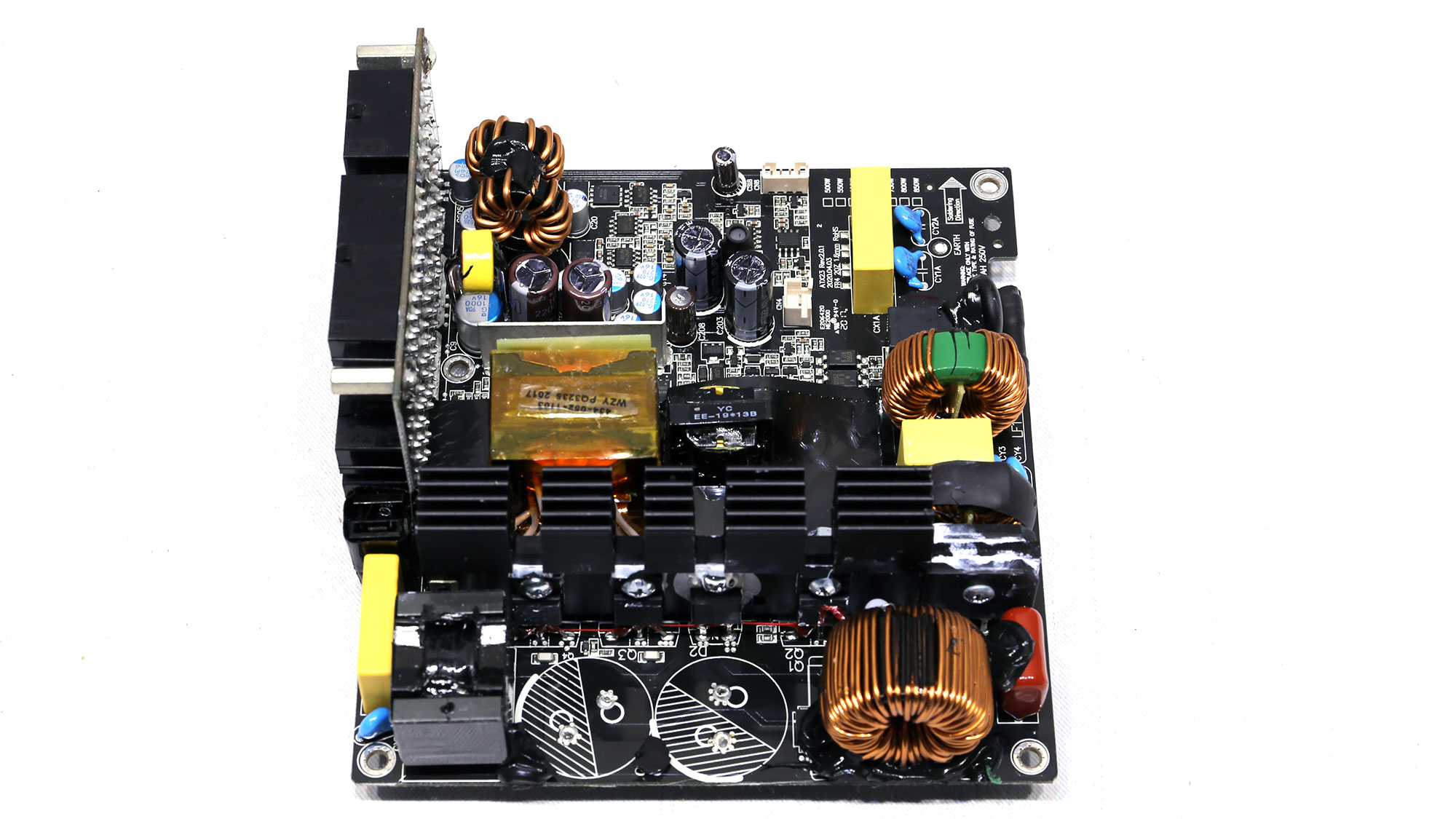
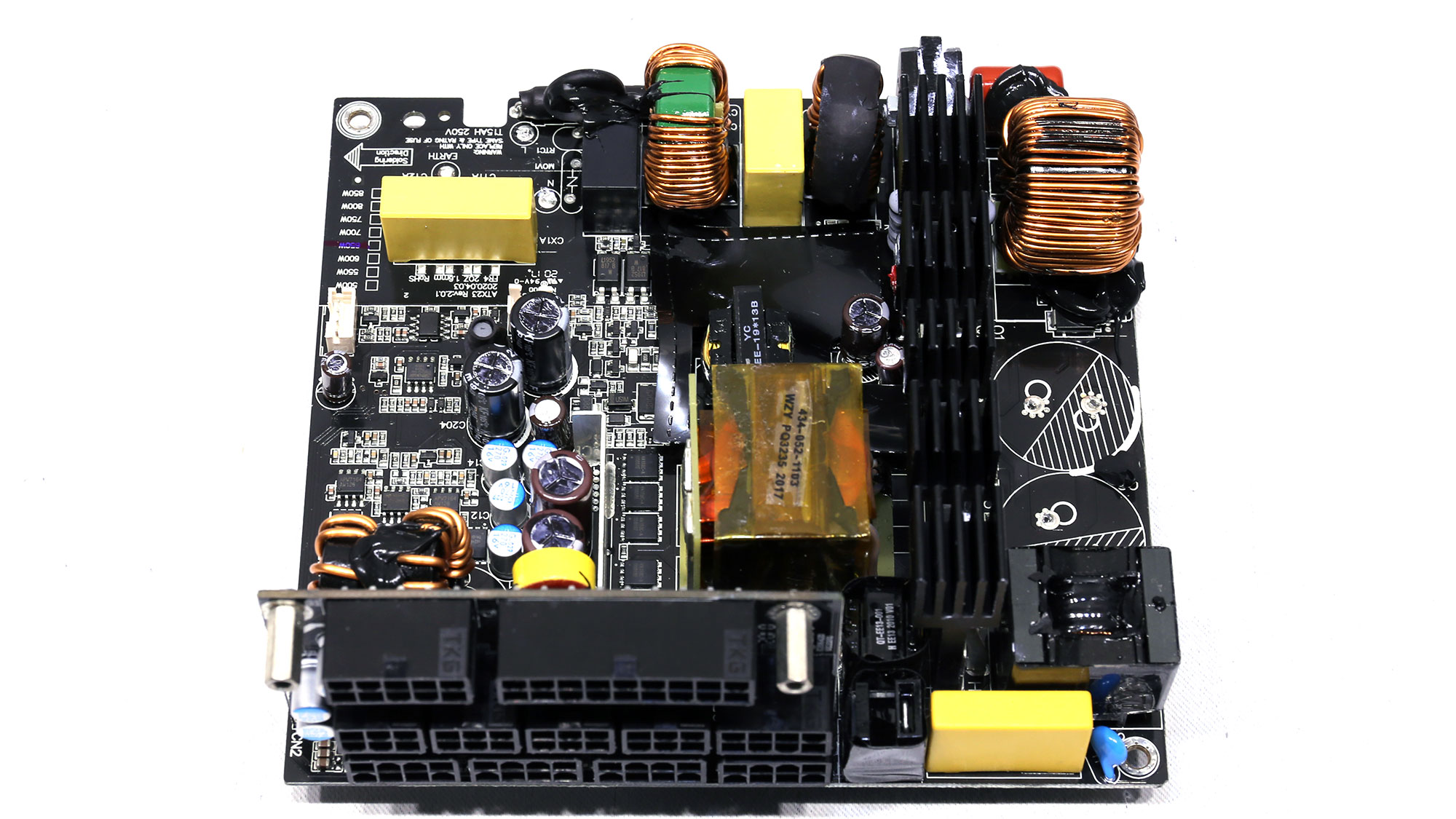
This is a high-end HKC platform using a half-bridge topology and an LLC resonant converter on the primary side. On the secondary side, we find synchronous rectification and DC-DC converters to generate the minor rails.
Soldering quality is satisfactory, and the design leaves lots of space on the secondary side, which looks almost empty. There no heat sinks on this side, with the 12V FETs being directly exposed to the fan's airflow since they are installed on the top side of the PCB.

Transient filter
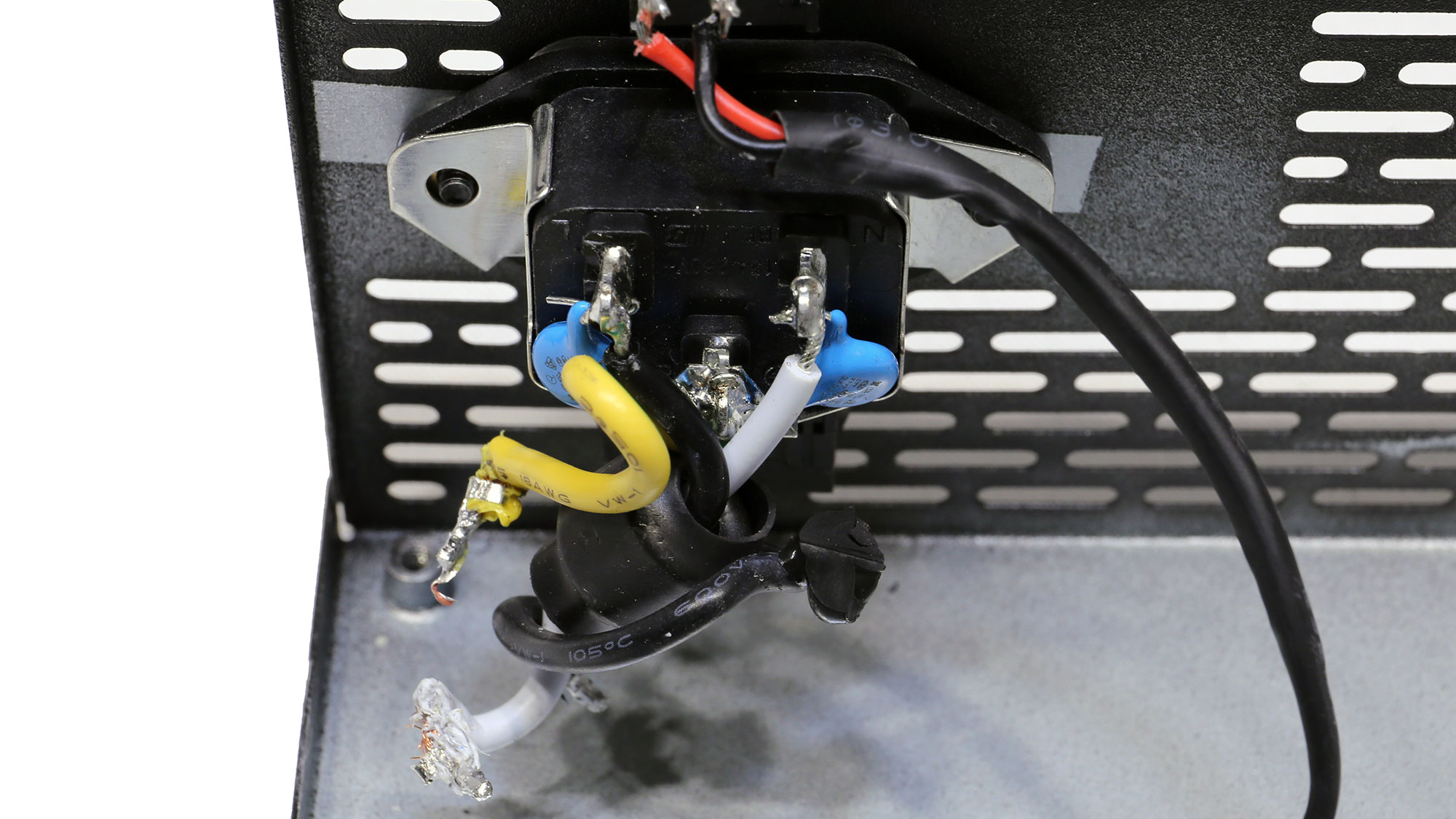
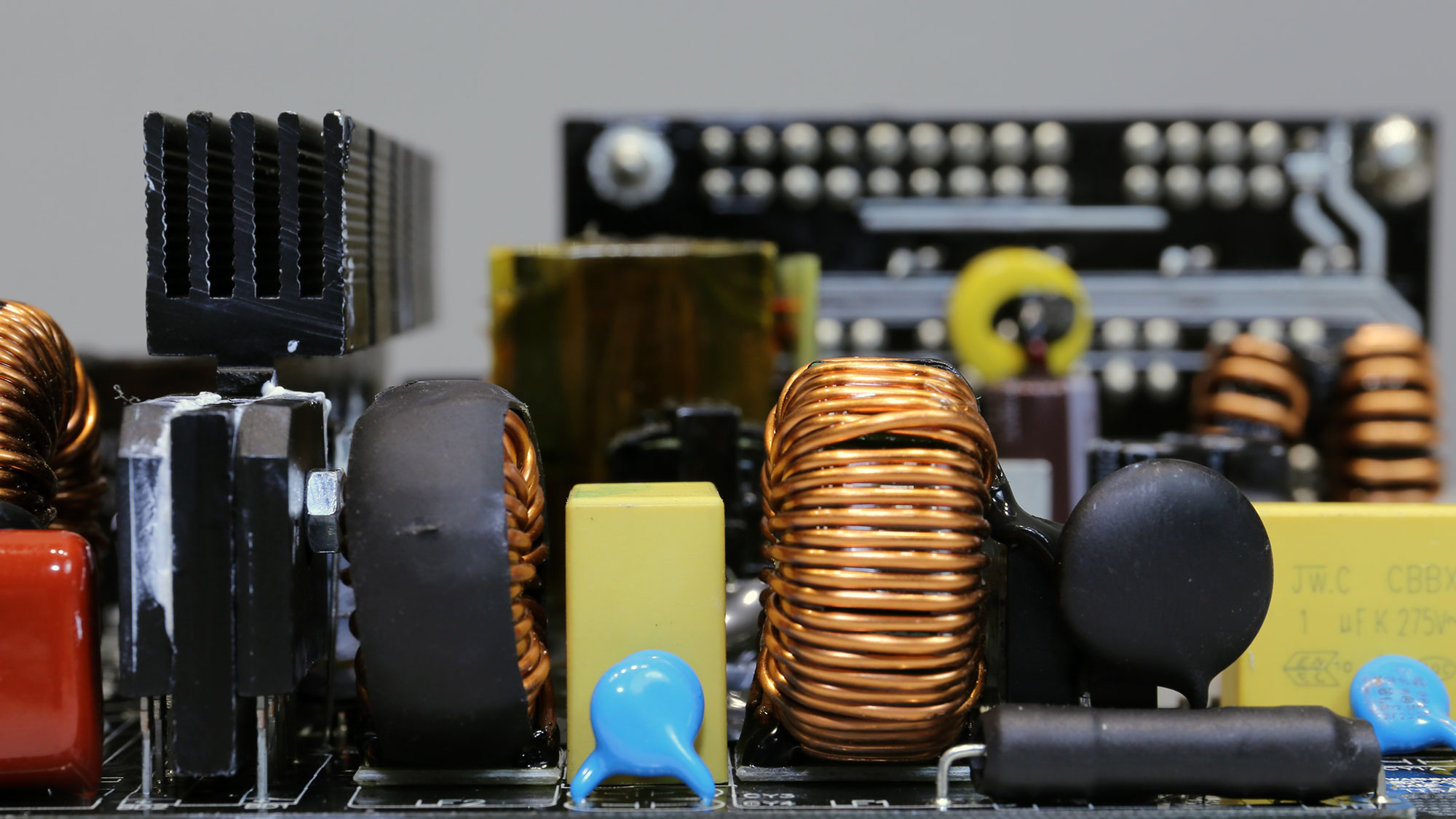
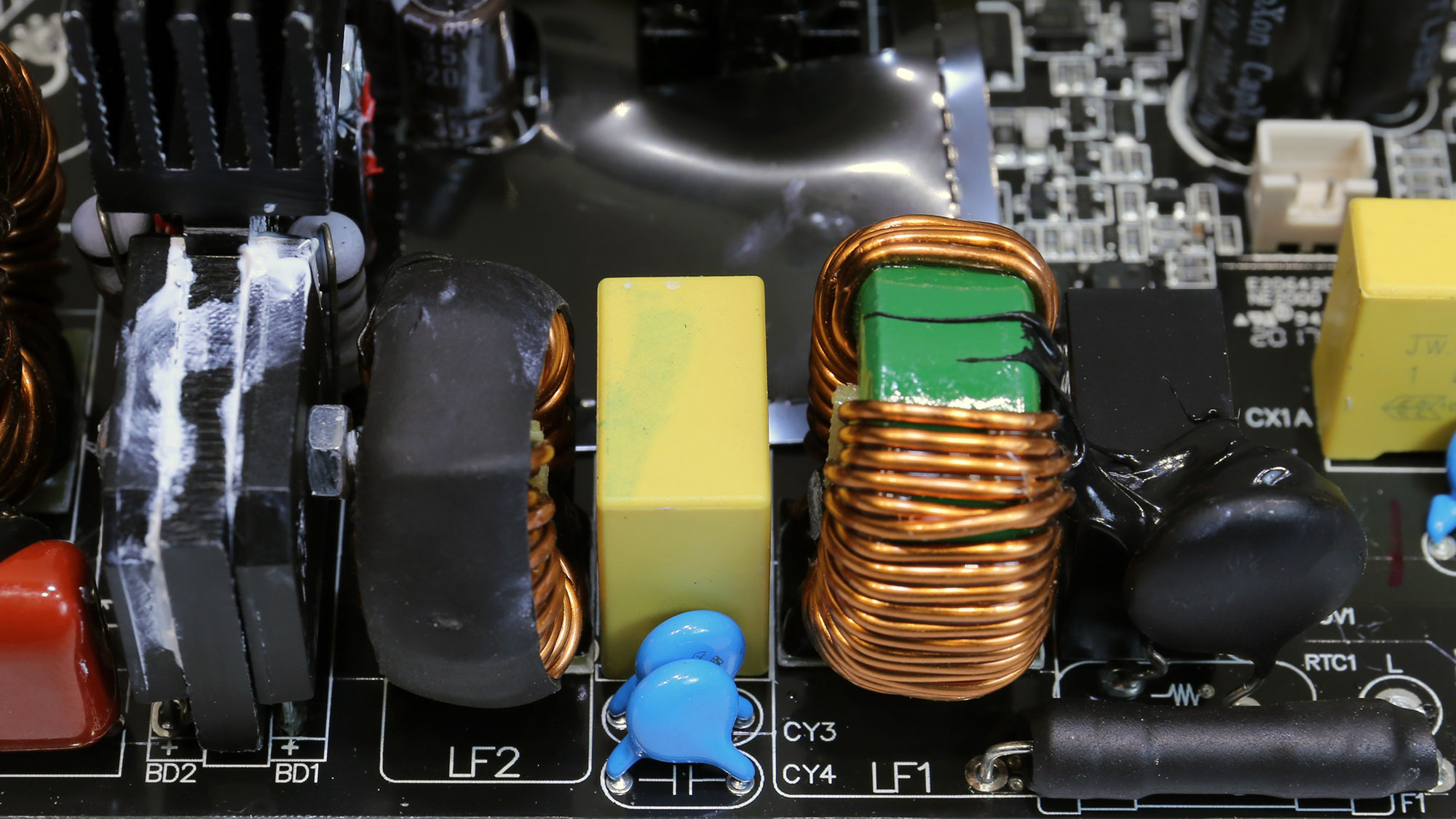
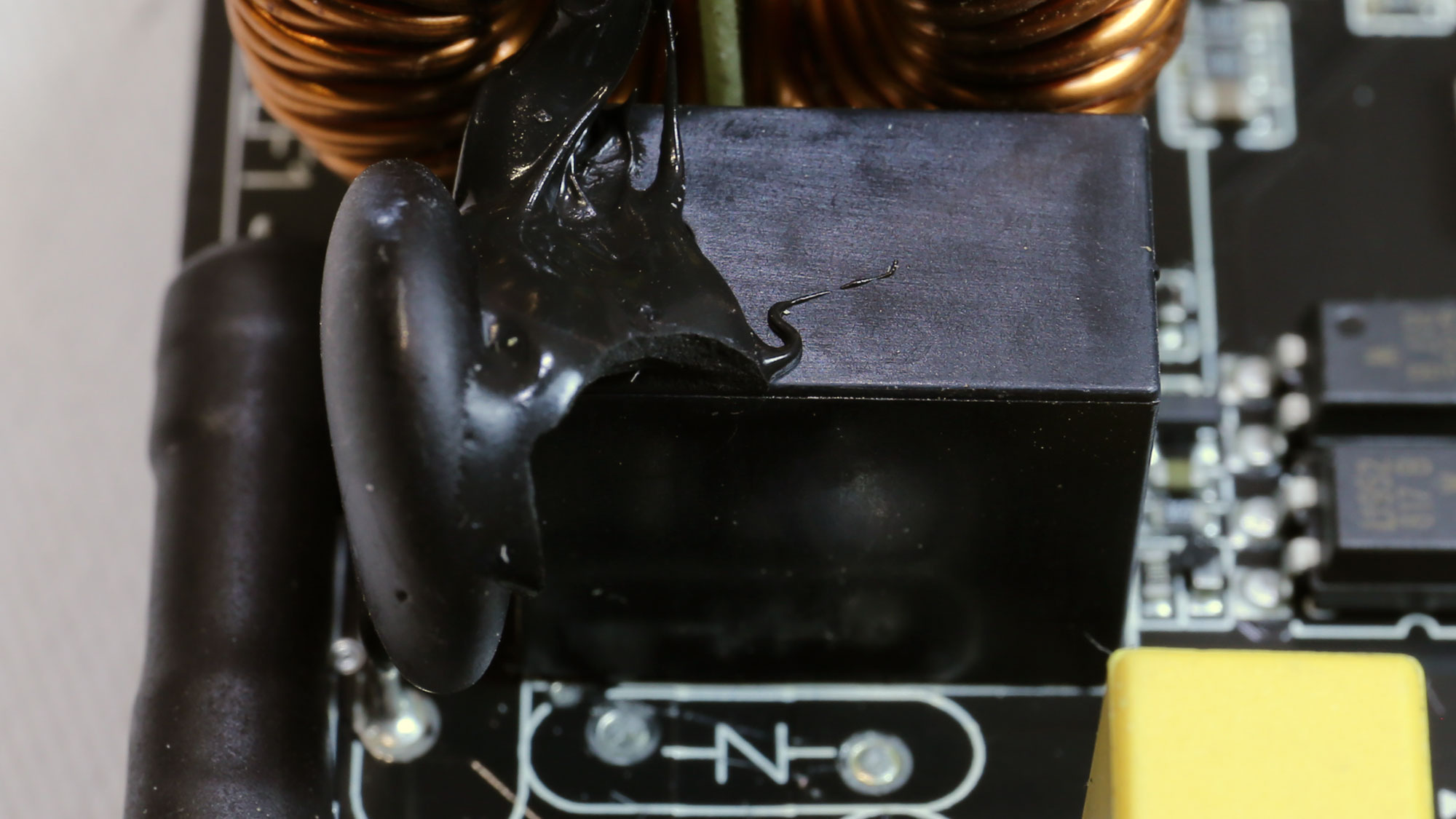
The transient filter does a good job, according to our test results. The only issue is that it lacks an MOV, so there is no surge protection. On the other hand, the PSU is equipped with an NTC thermistor and a relay, with the former having low resistance. With a higher resistance NTC thermistor, the inrush currents with 230V would be even lower.
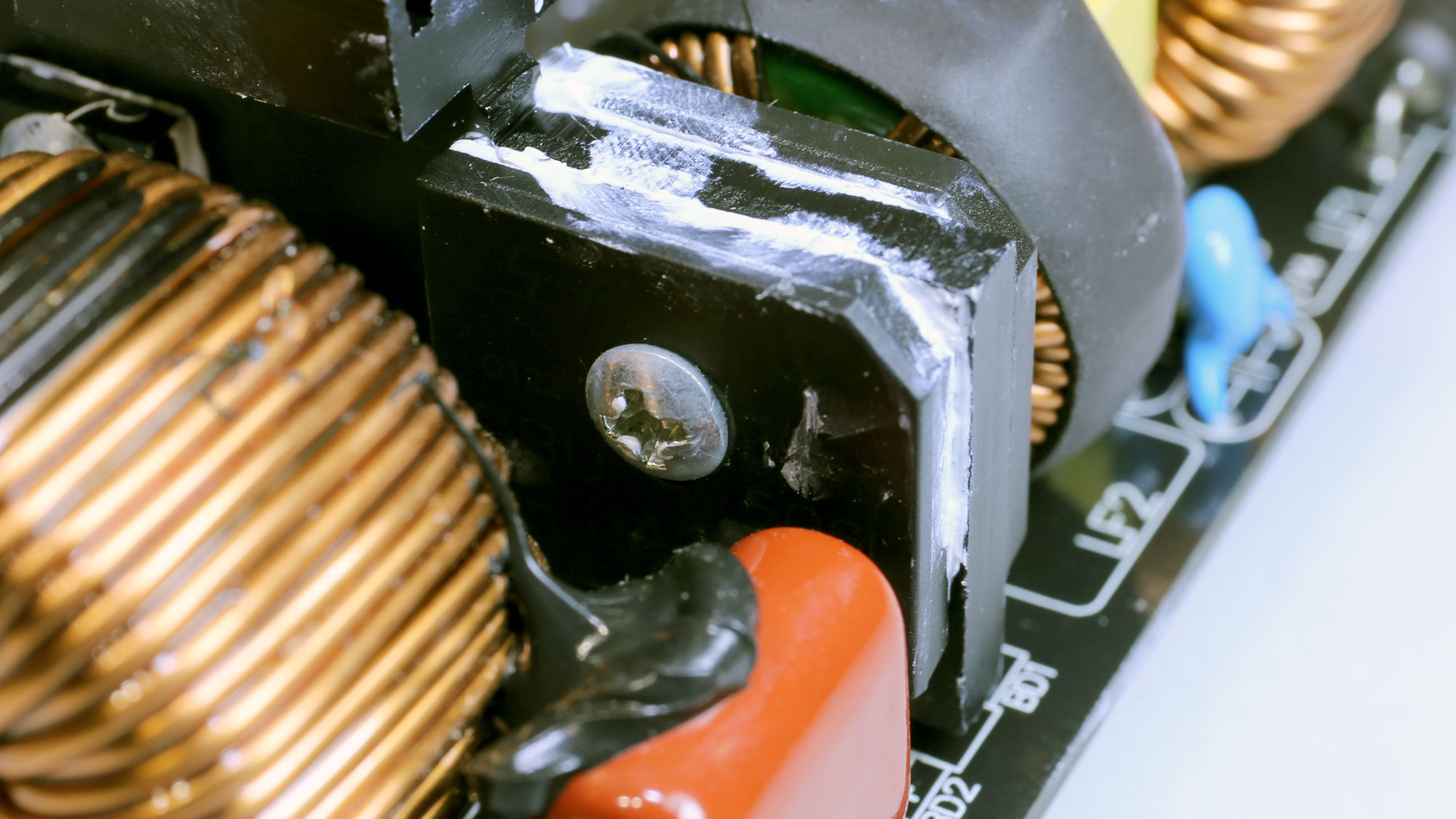
Bridge rectifiers
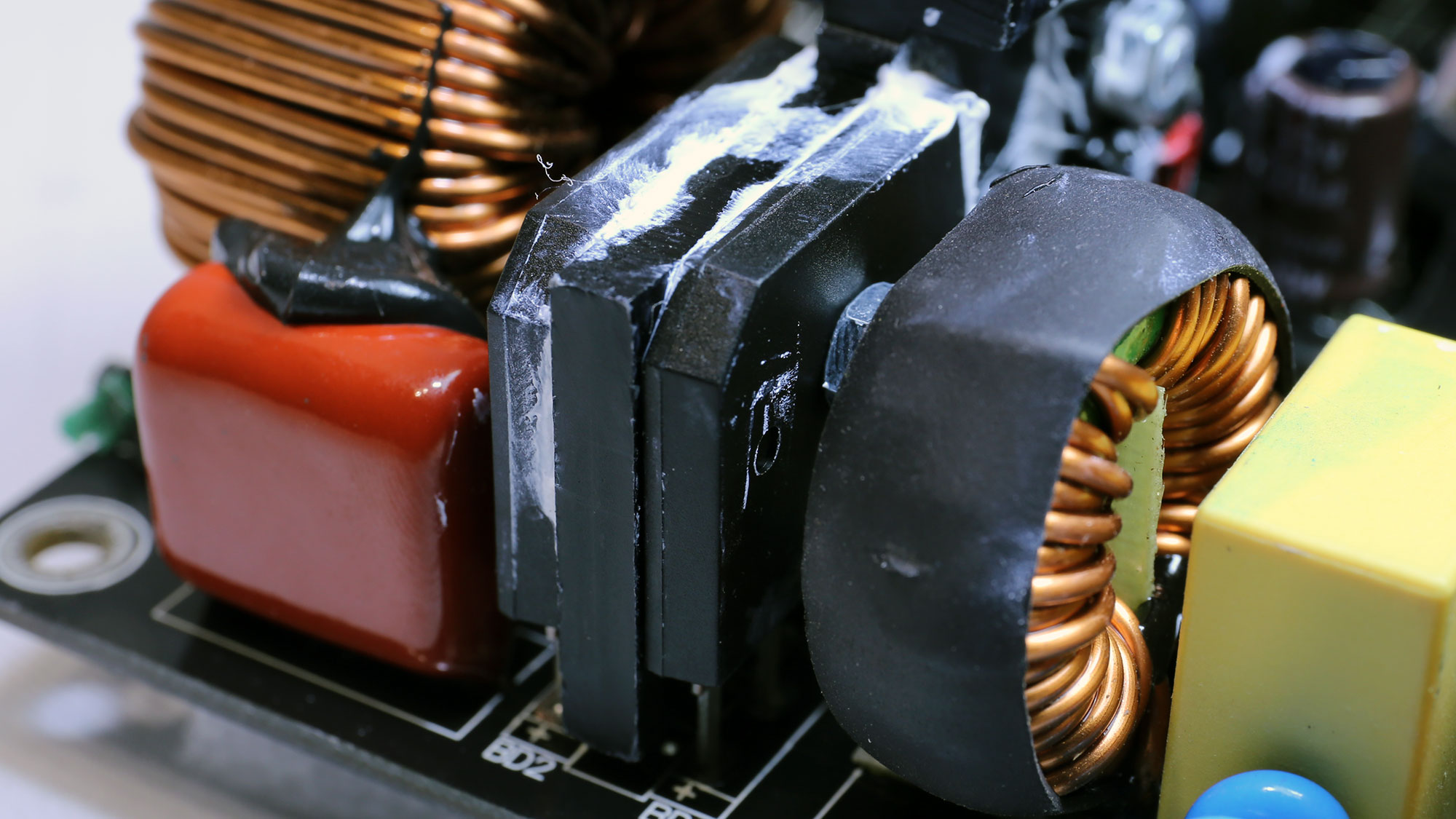
Two bridge rectifiers are bolted onto a small heatsink.

APFC converter
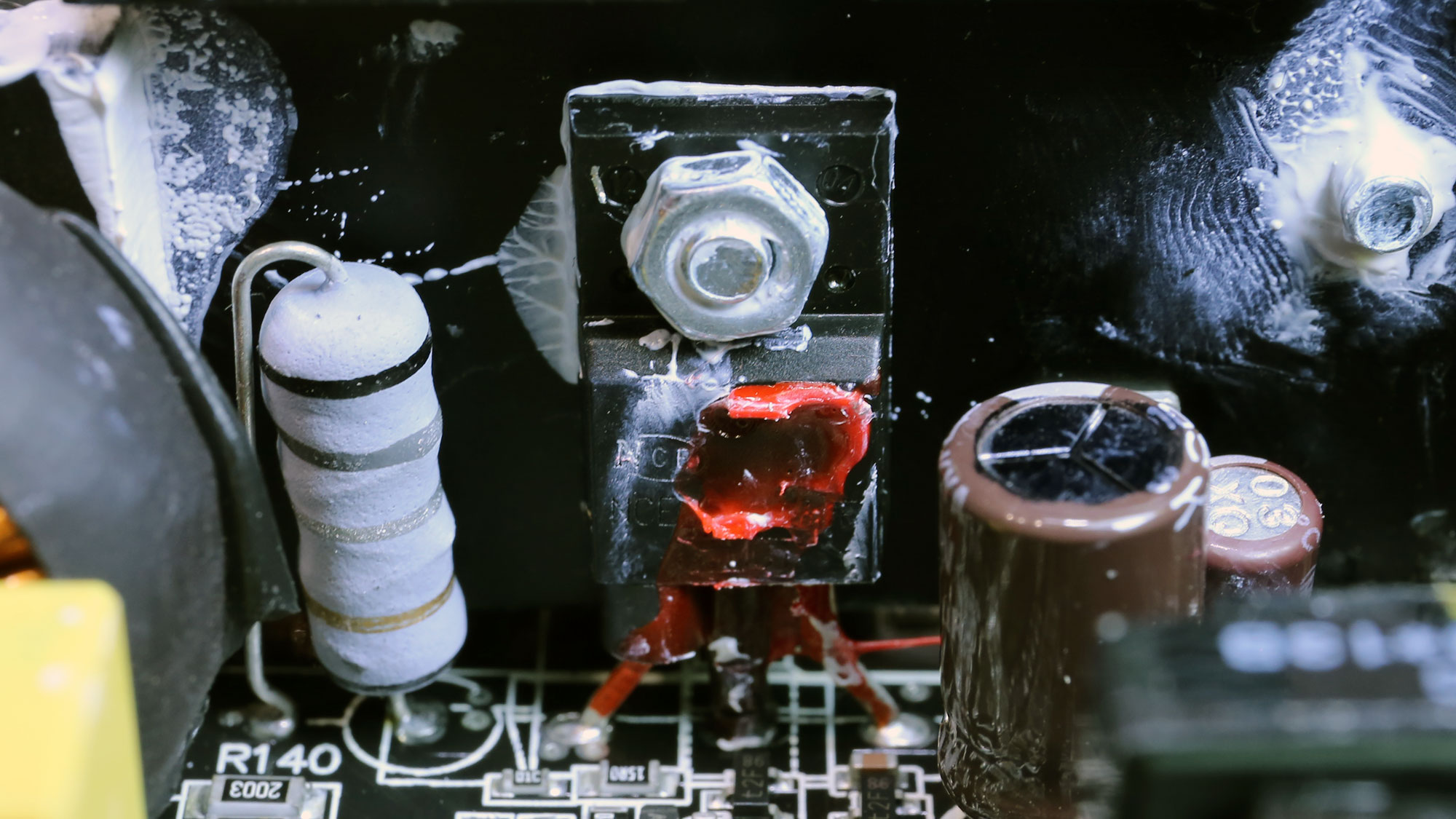
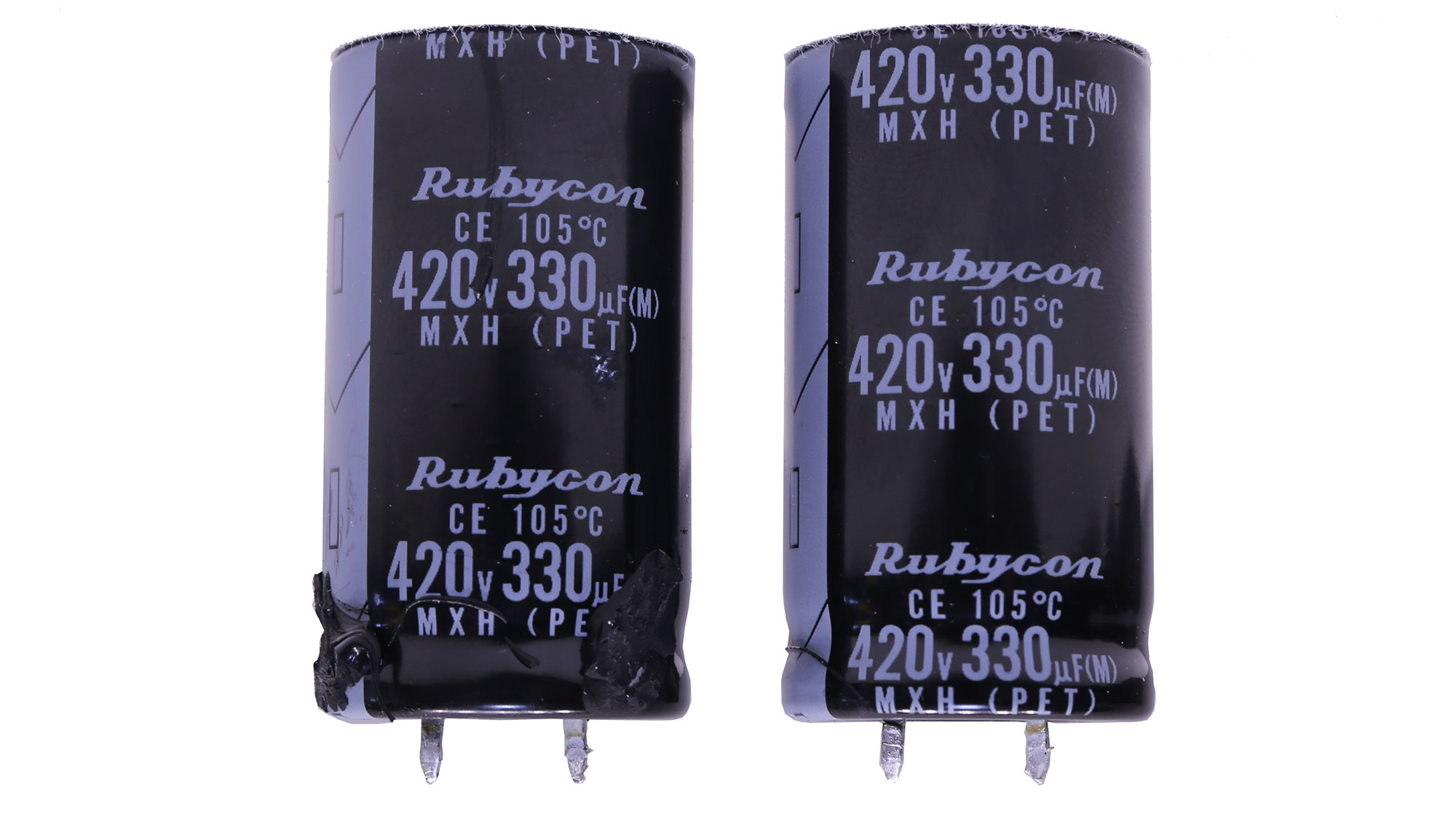
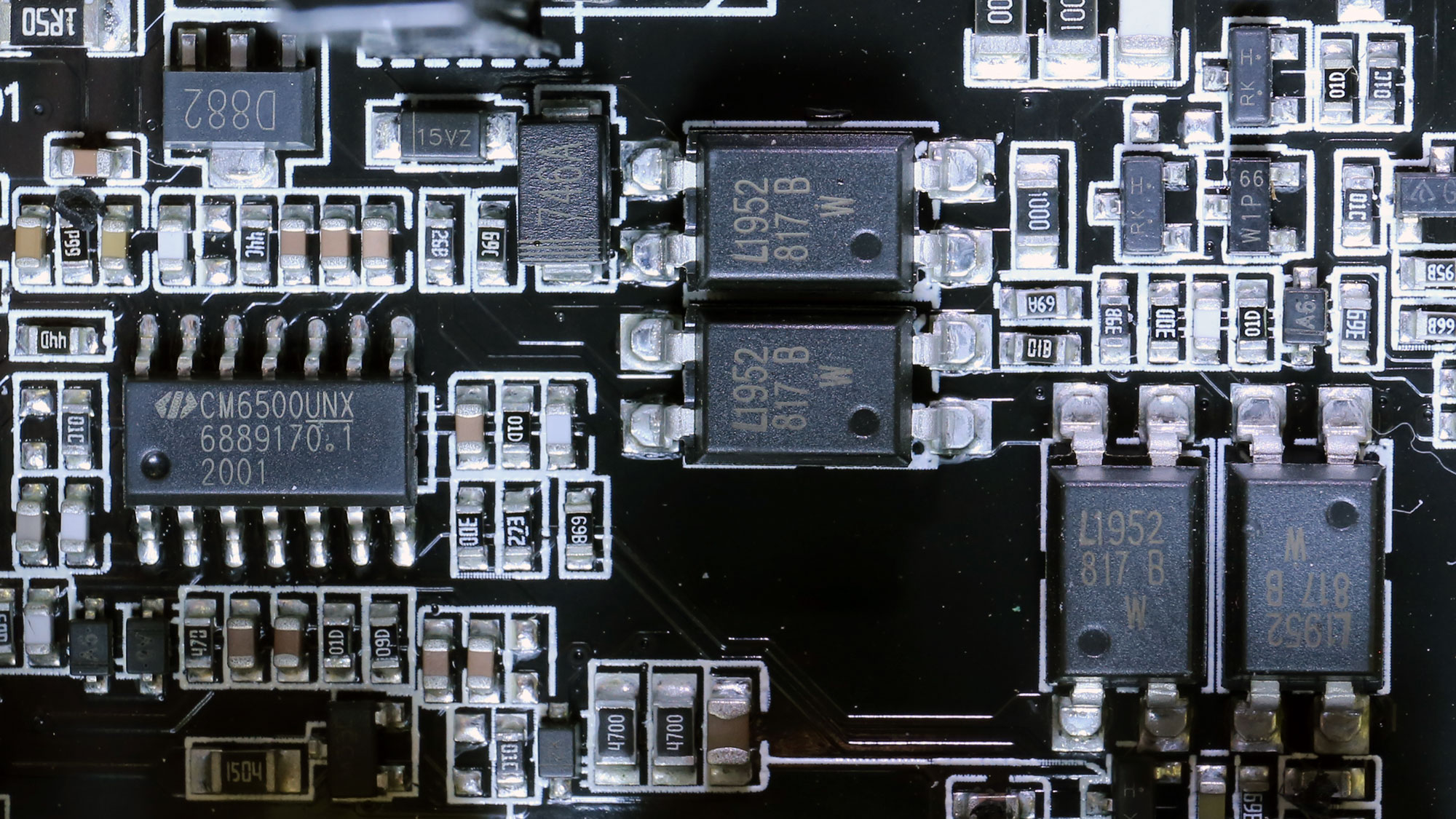
The APFC converter uses two FETs and a single boost diode. The bulk caps are provided by Rubycon and have enough capacity to allow for a higher than 17ms hold-up time.
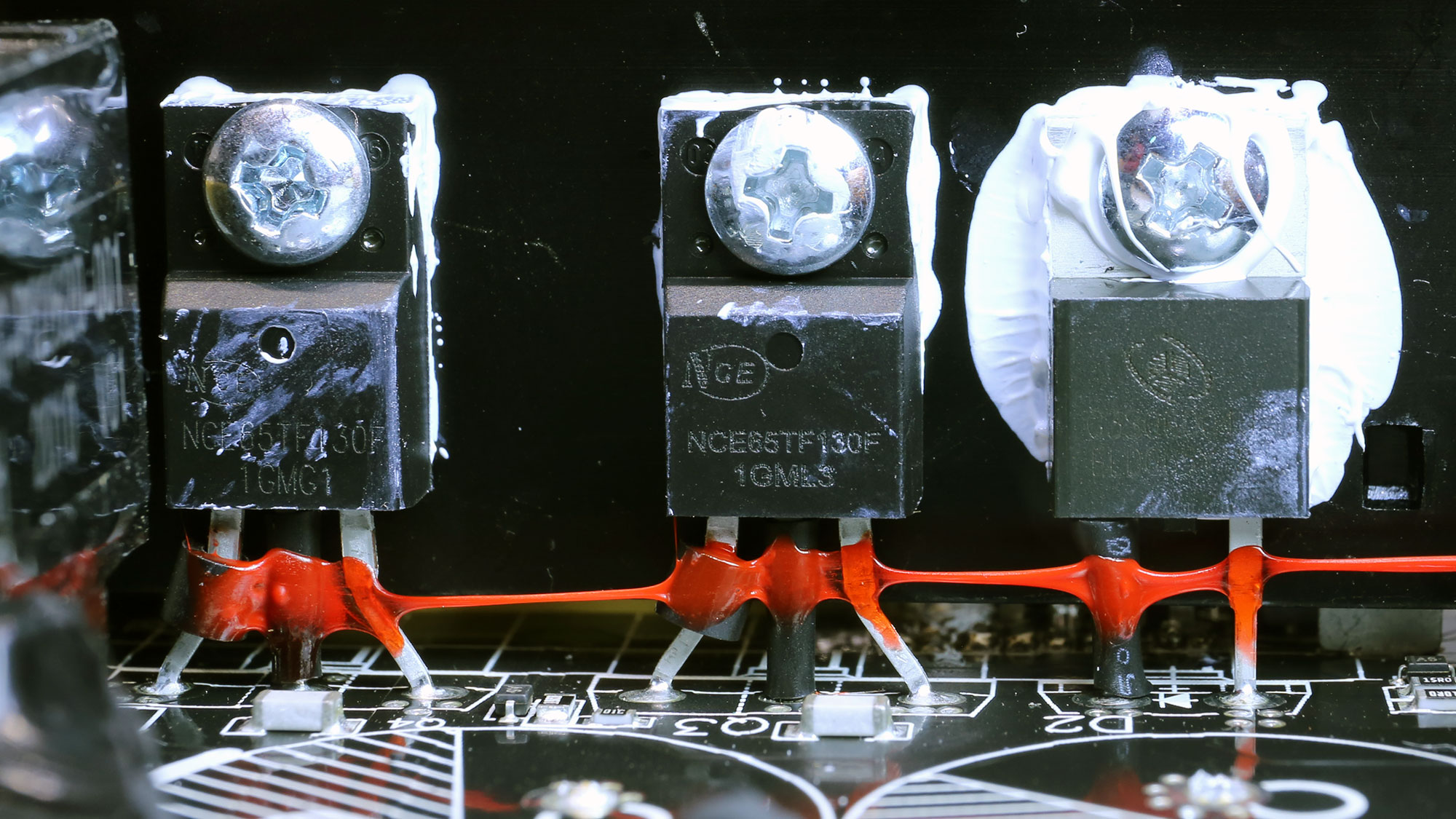
Main FETs and primary transformer

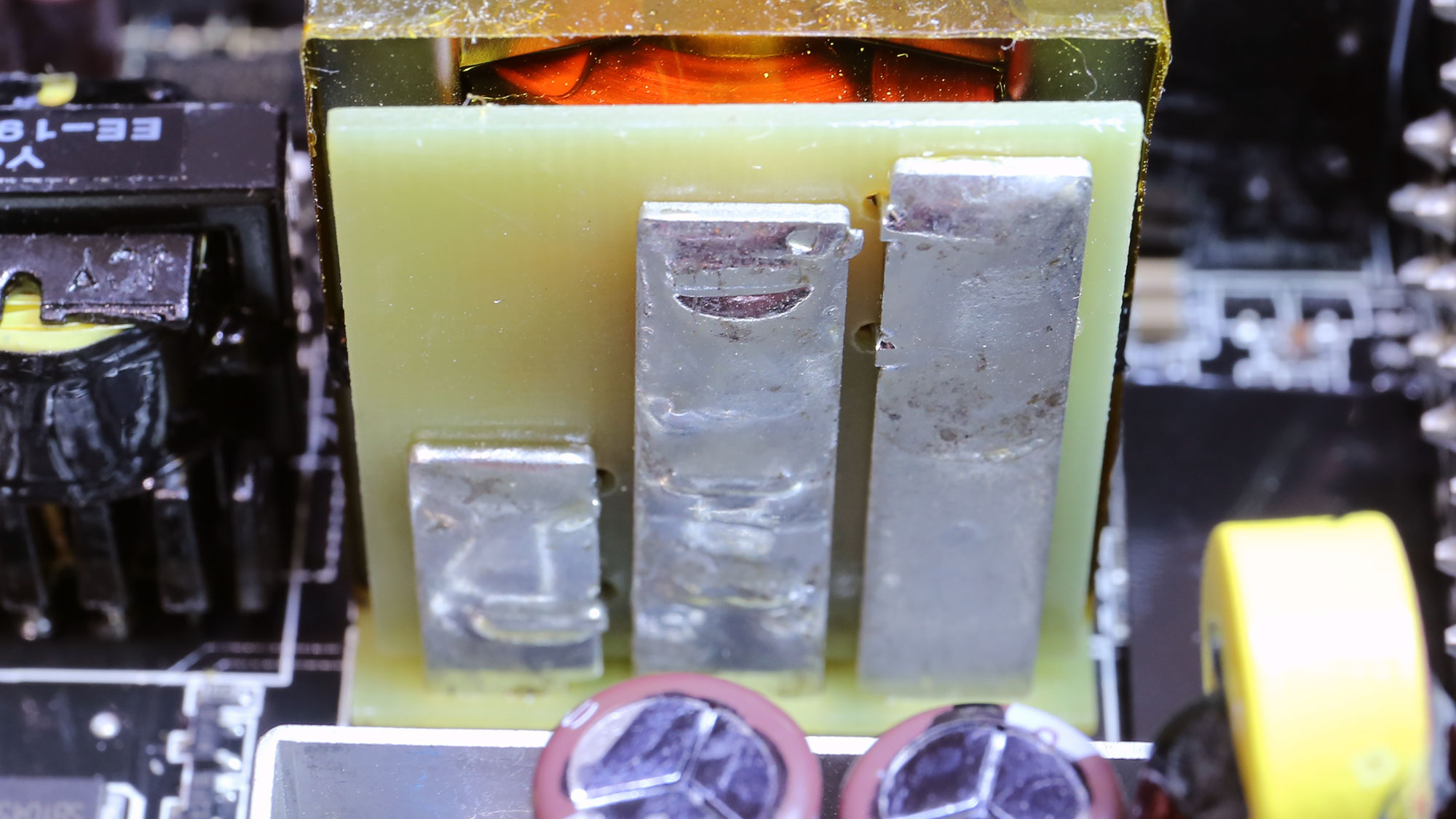
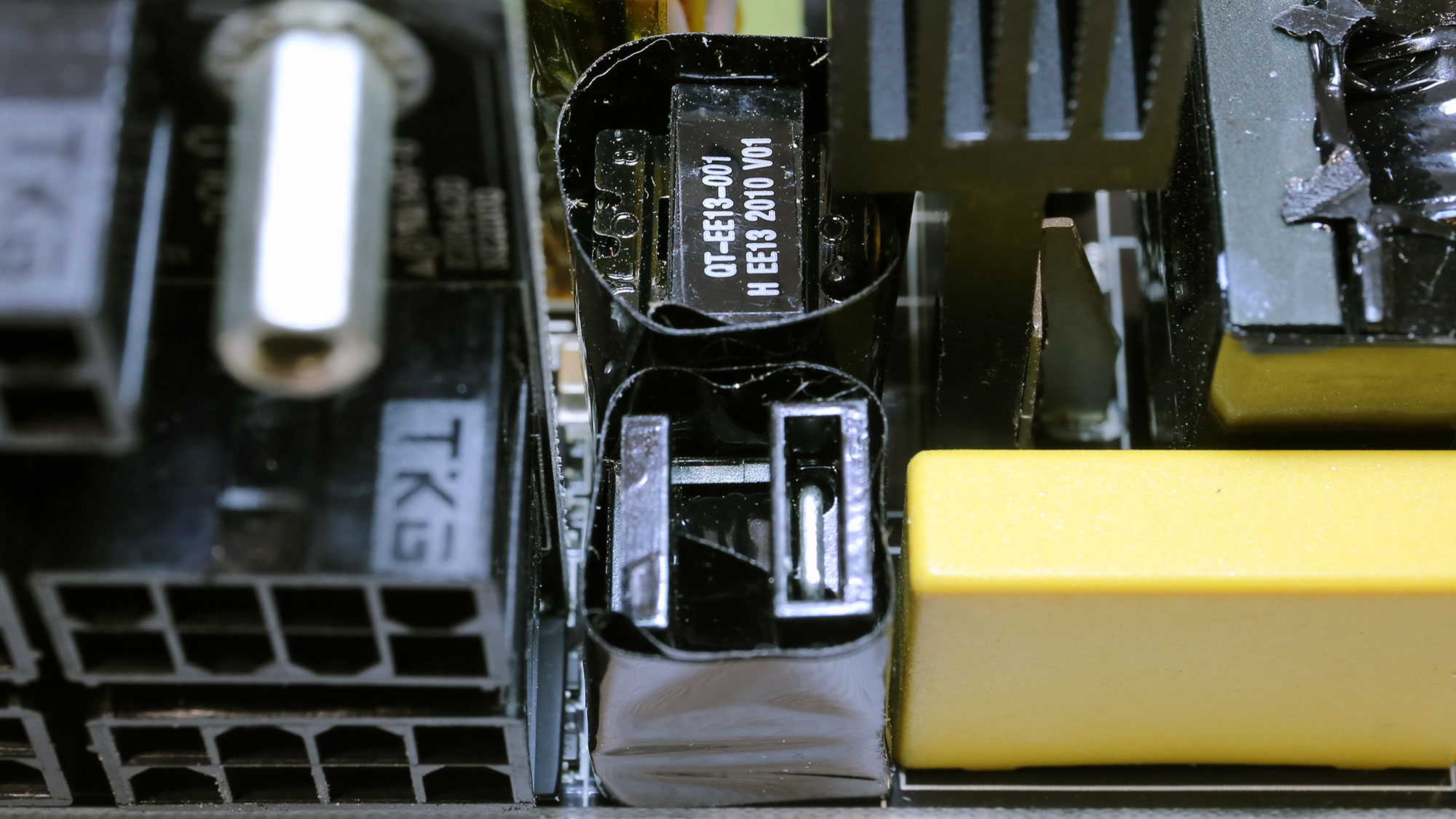

The main FETs are provided by NCE Power, a Chinese manufacturer, and are installed into a half-bridge topology. An LLC converter is also used to boost efficiency.

12V FETs and VRMs
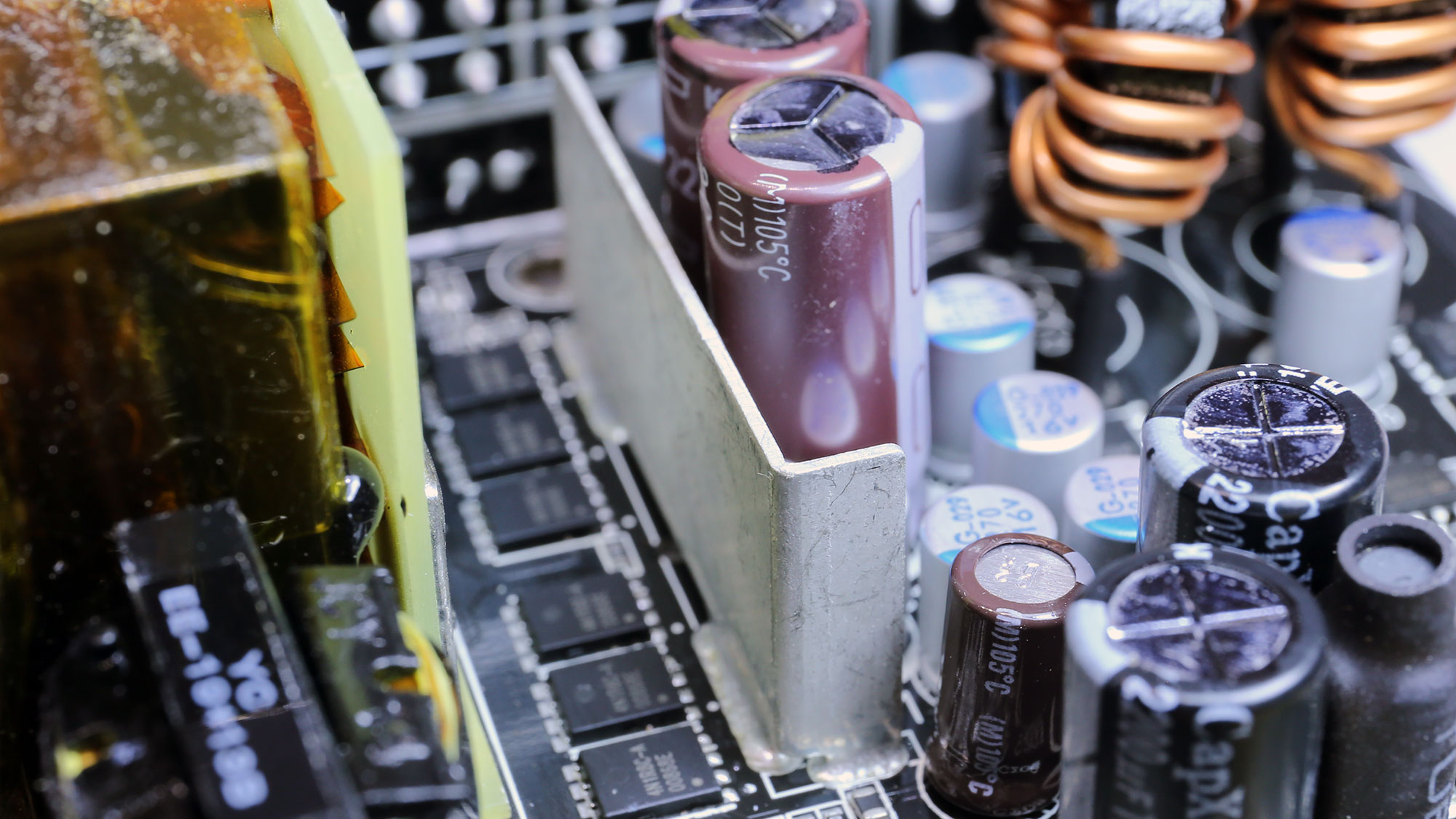
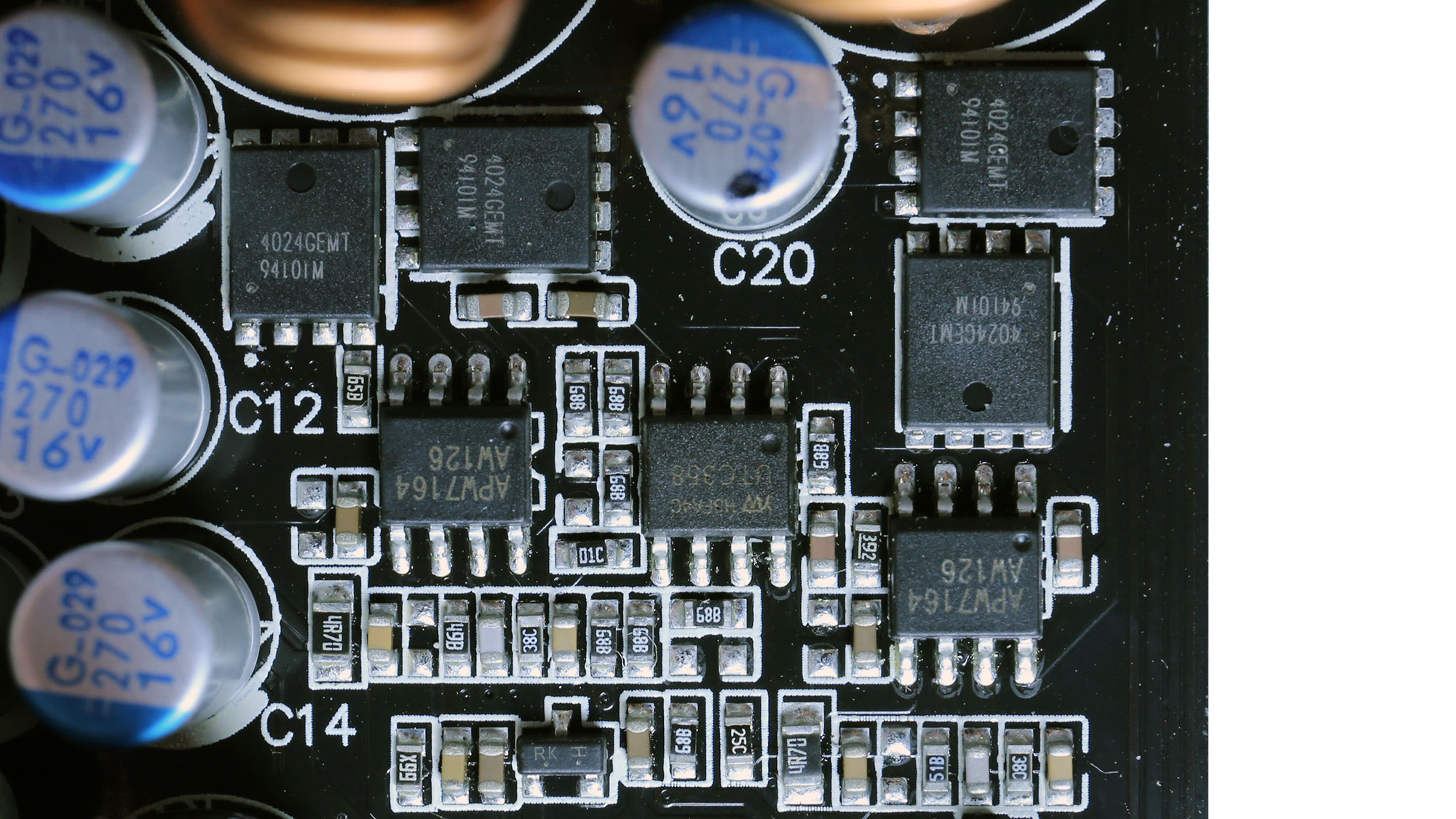

Six FETs handle the regulation of the 12V rail, and for the minor rails, a pair of DC-DC converters are used. The latter also uses two PWM controllers, provided by Anpec.

Filtering caps

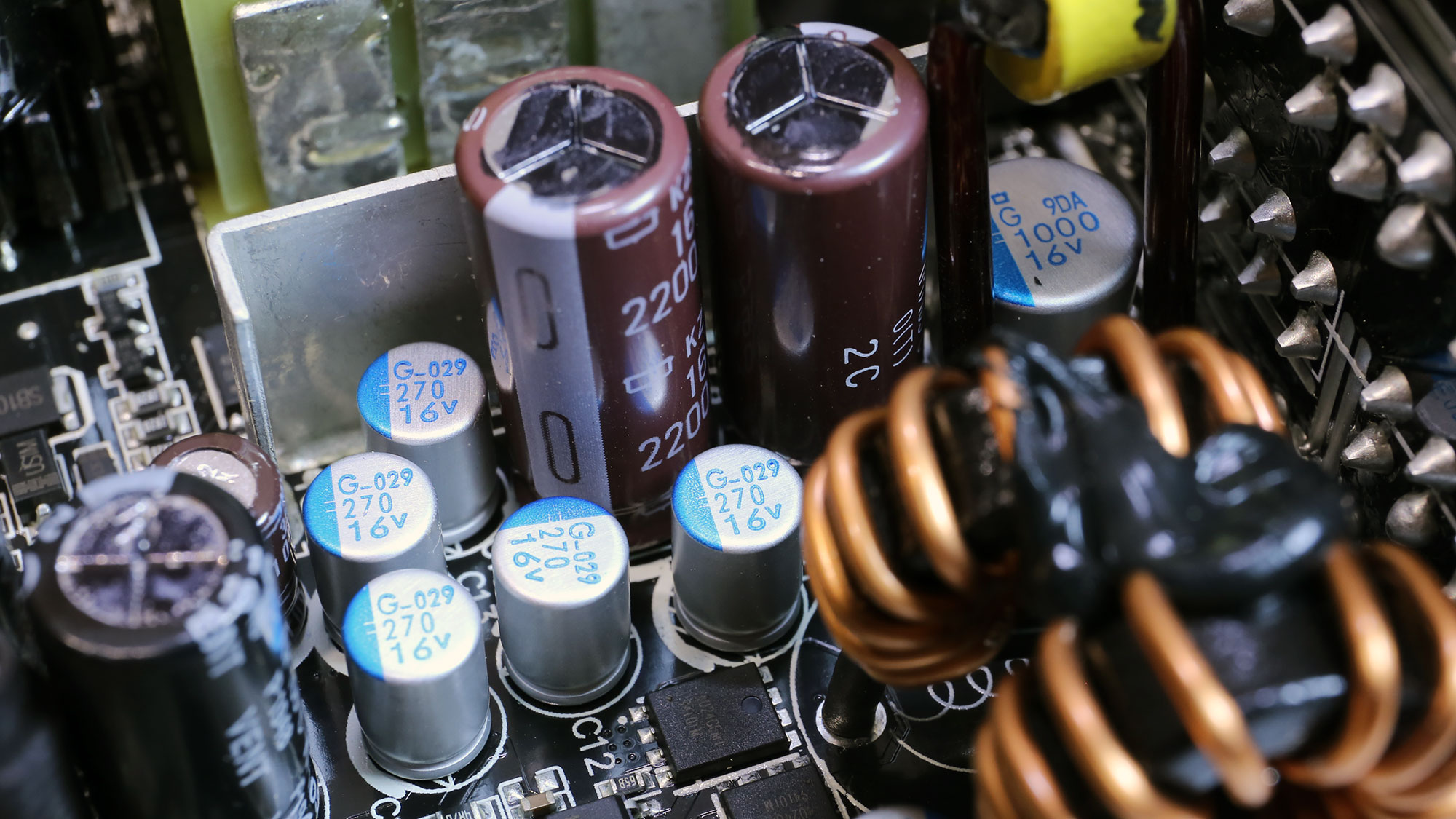

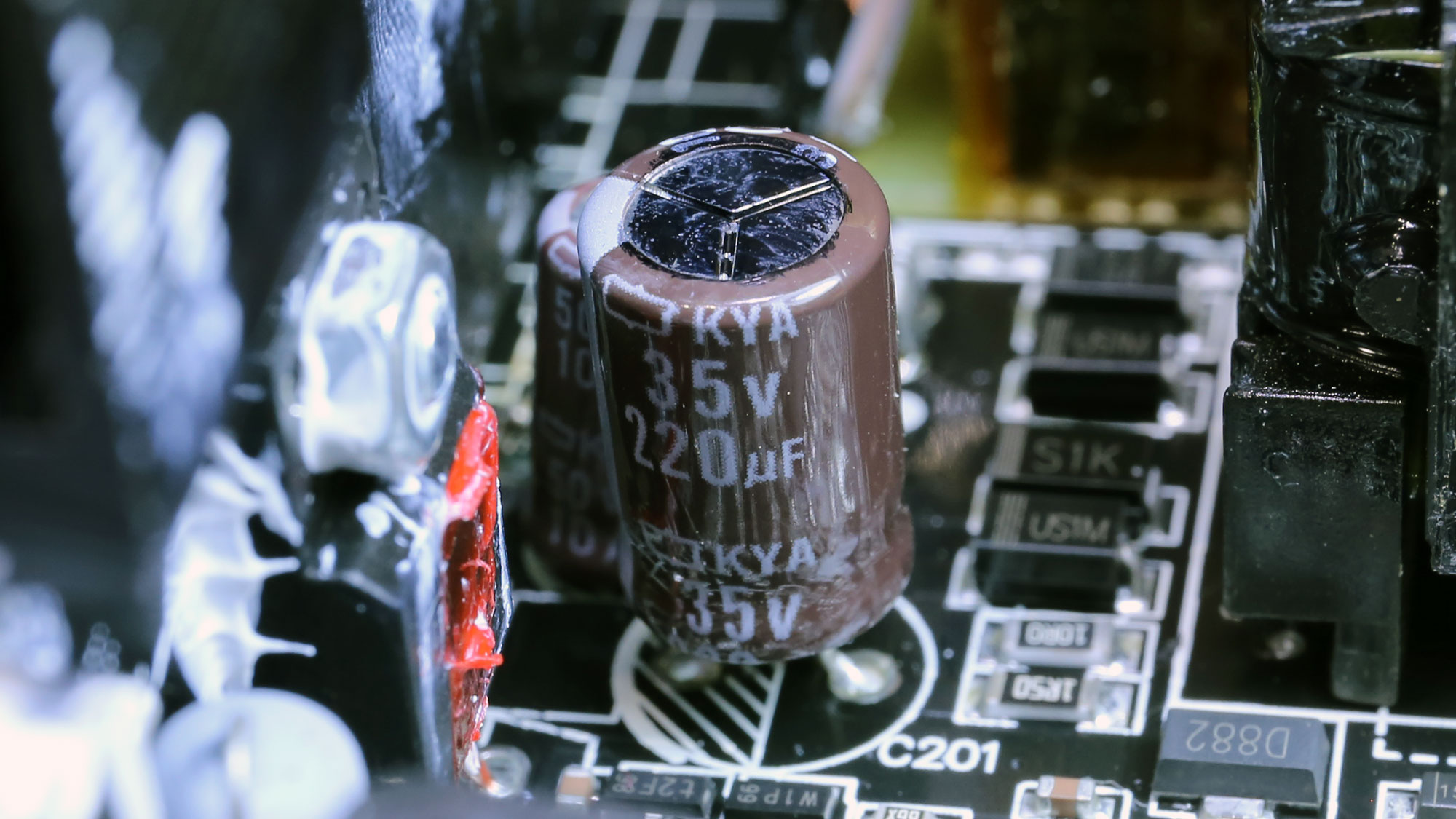
There aren't many electrolytic caps, but the ones that HKC used are of good quality. A large number of polymer caps do the heavy lifting in ripple filtering.

5VSB Circuit
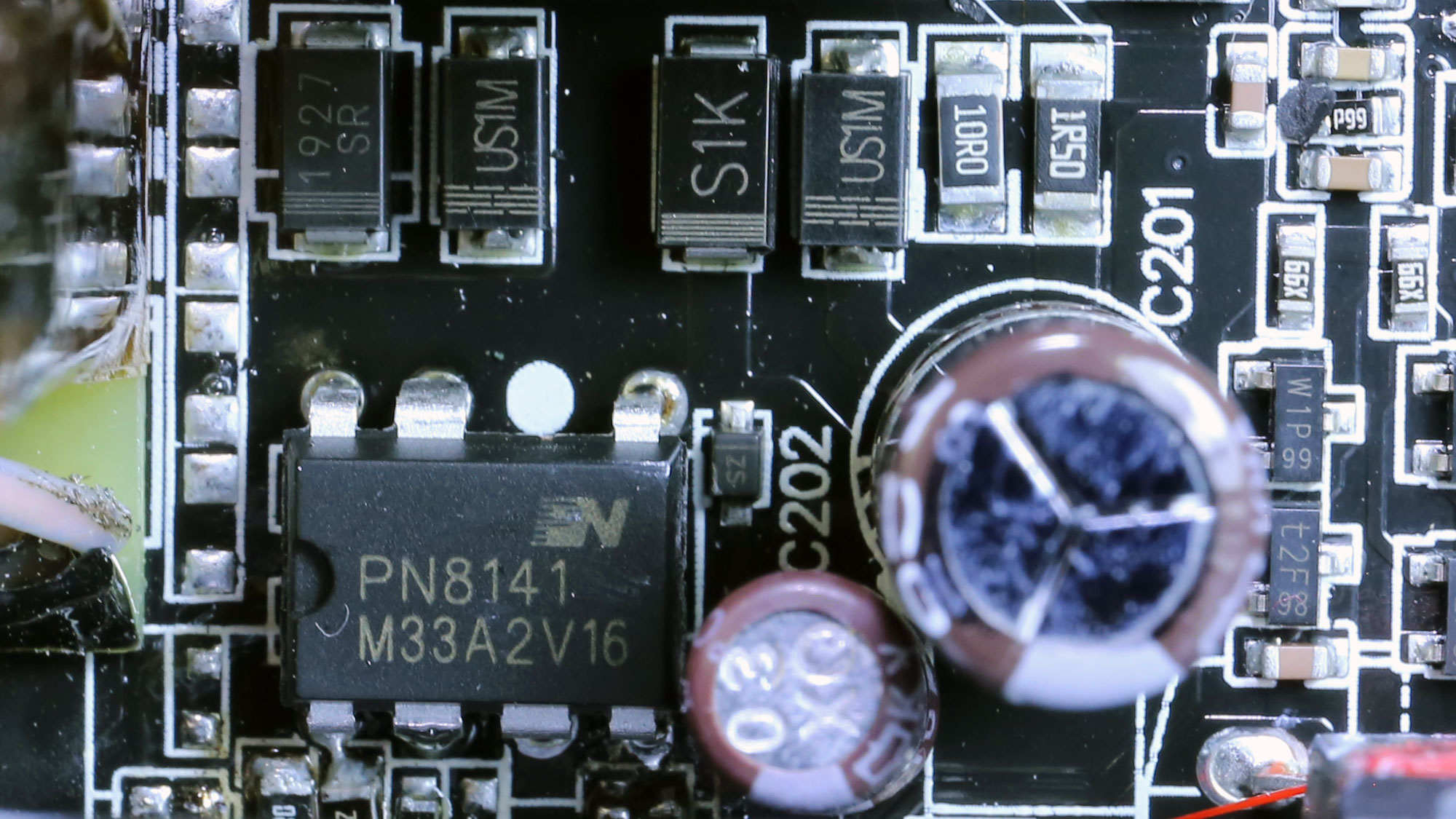
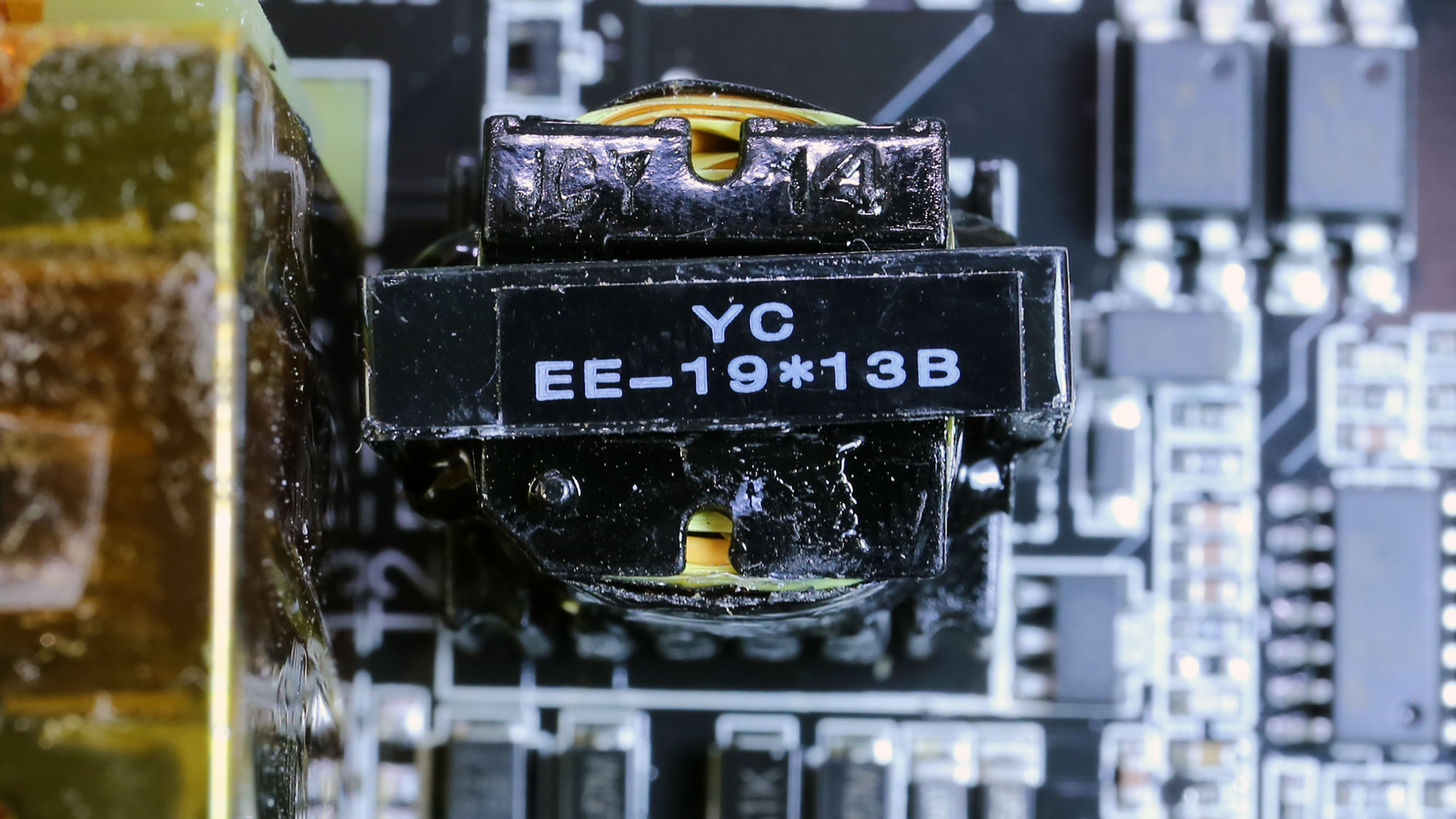
The standby PWM controller is a PN8141 IC, and the 5VSB rectifier is a SB1045L SBR.
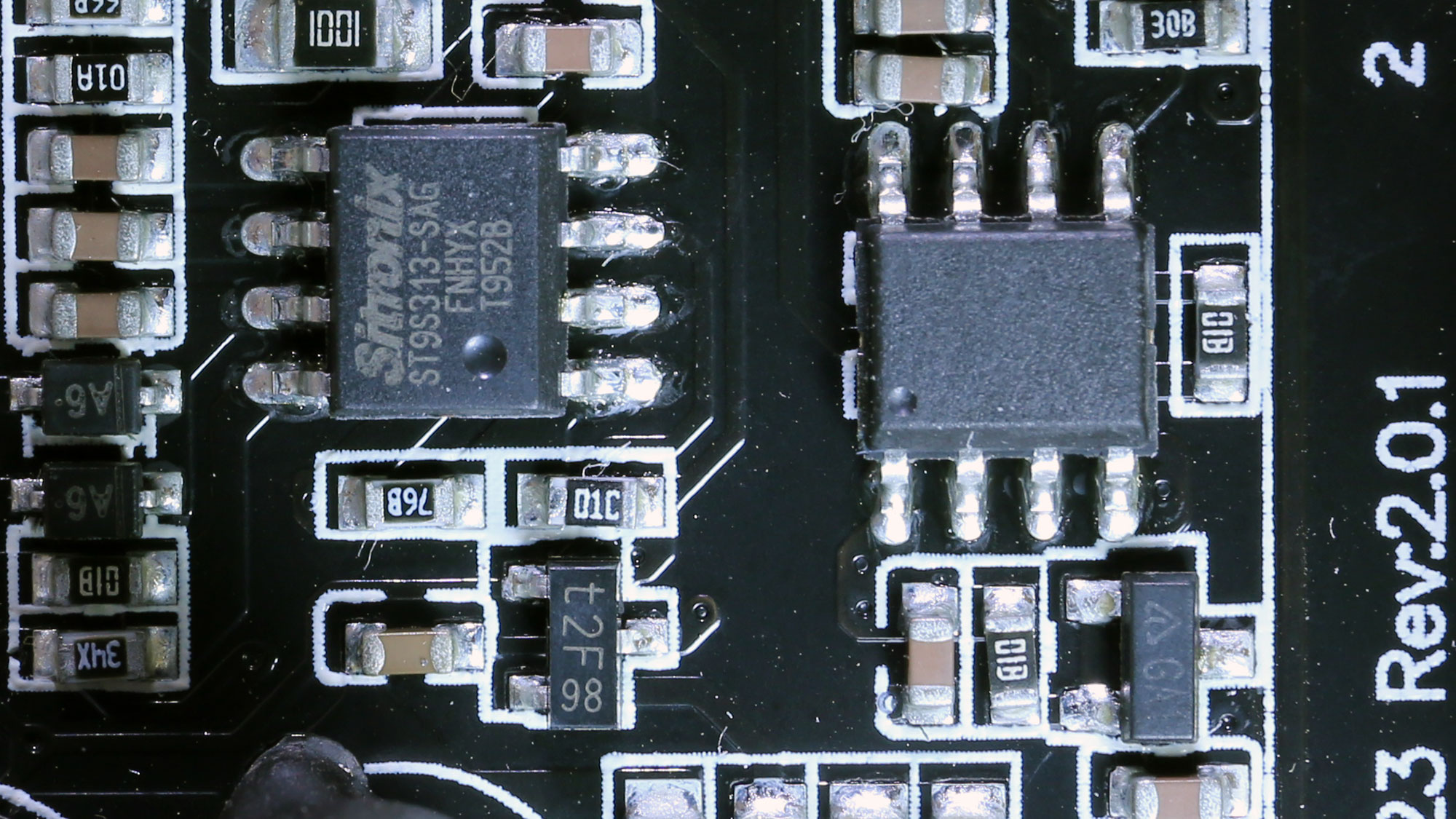

Eleven polymer caps are installed on the modular board's face to provide an extra ripple filtering layer.
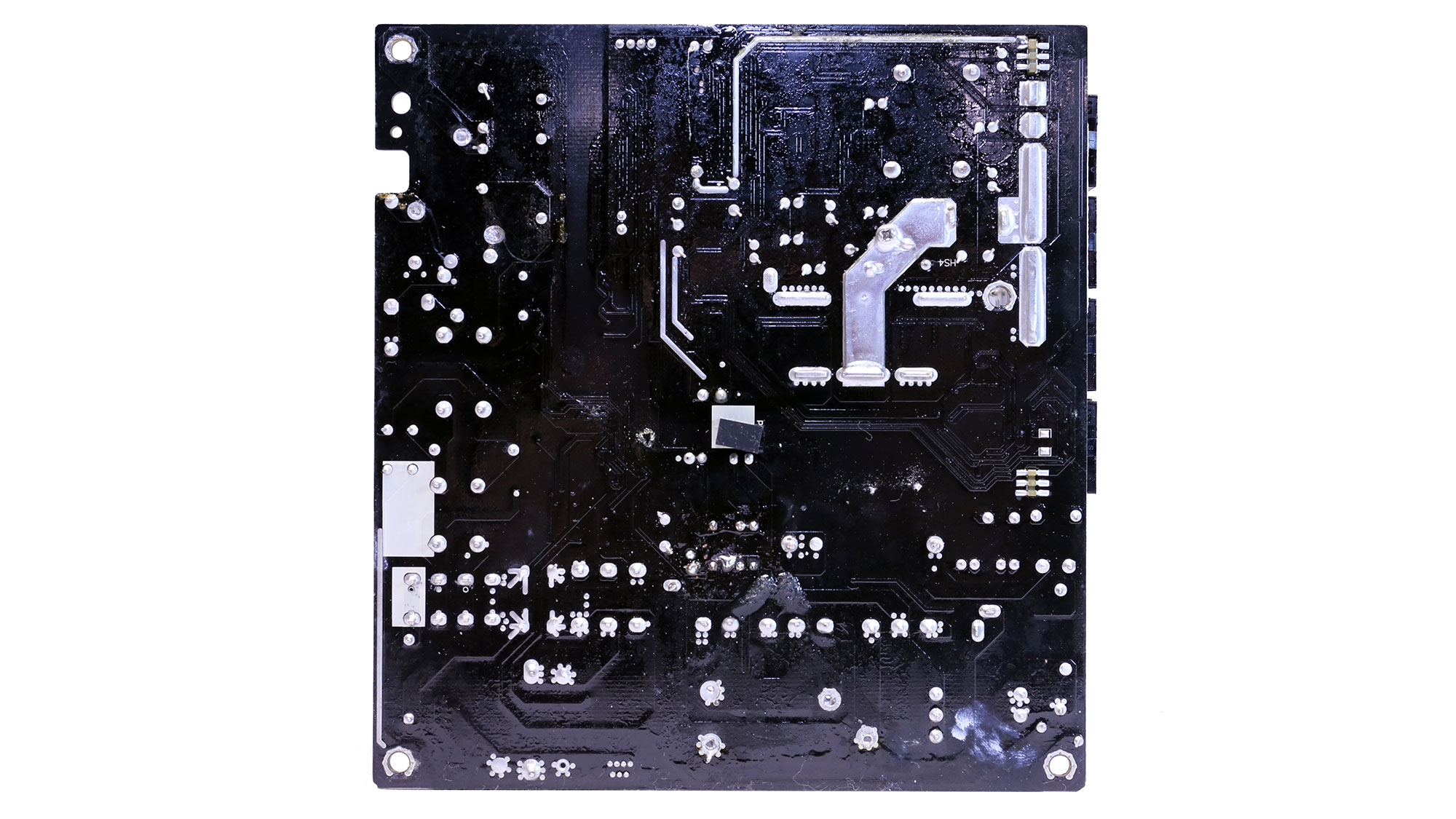
Soldering quality
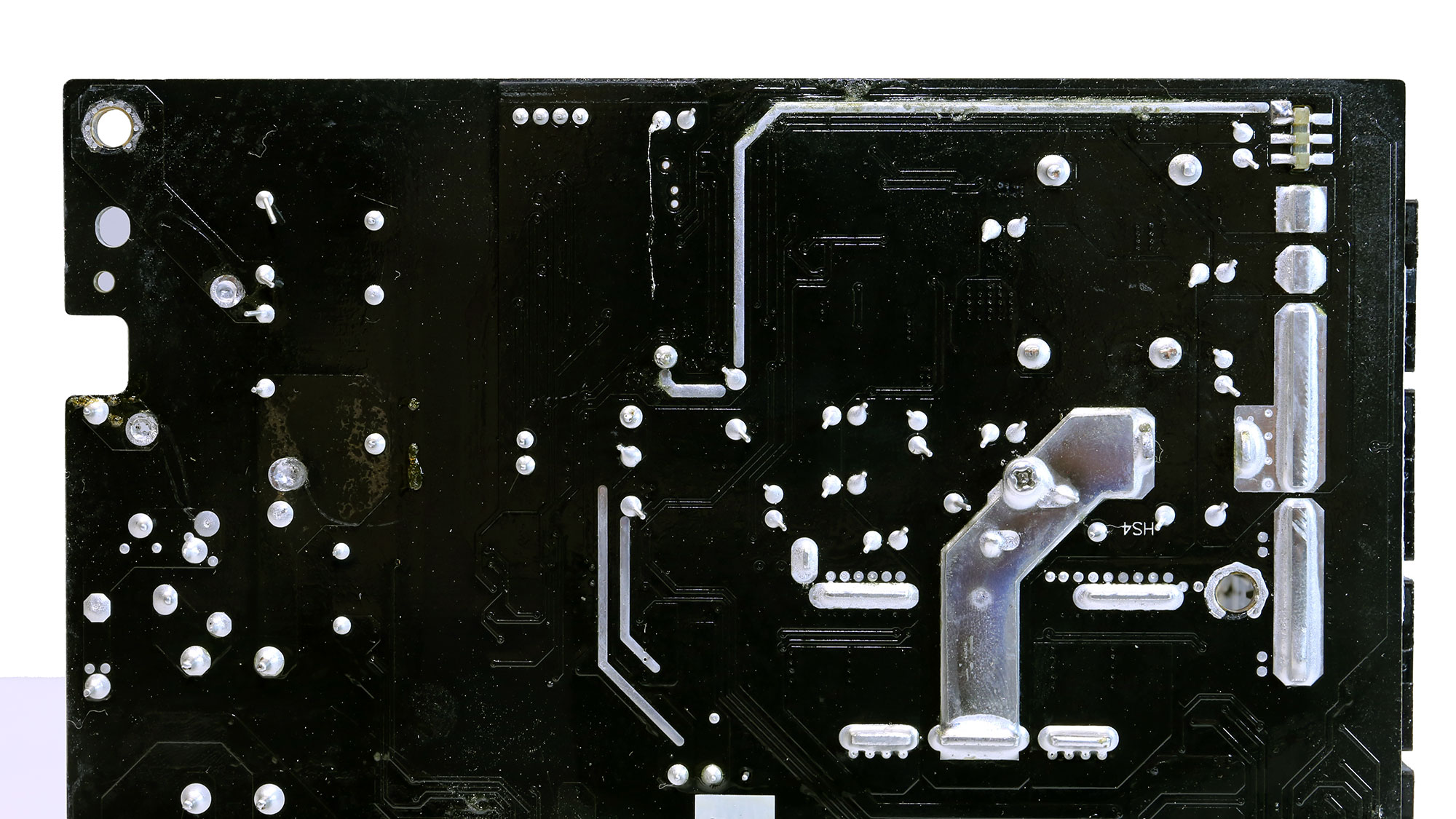
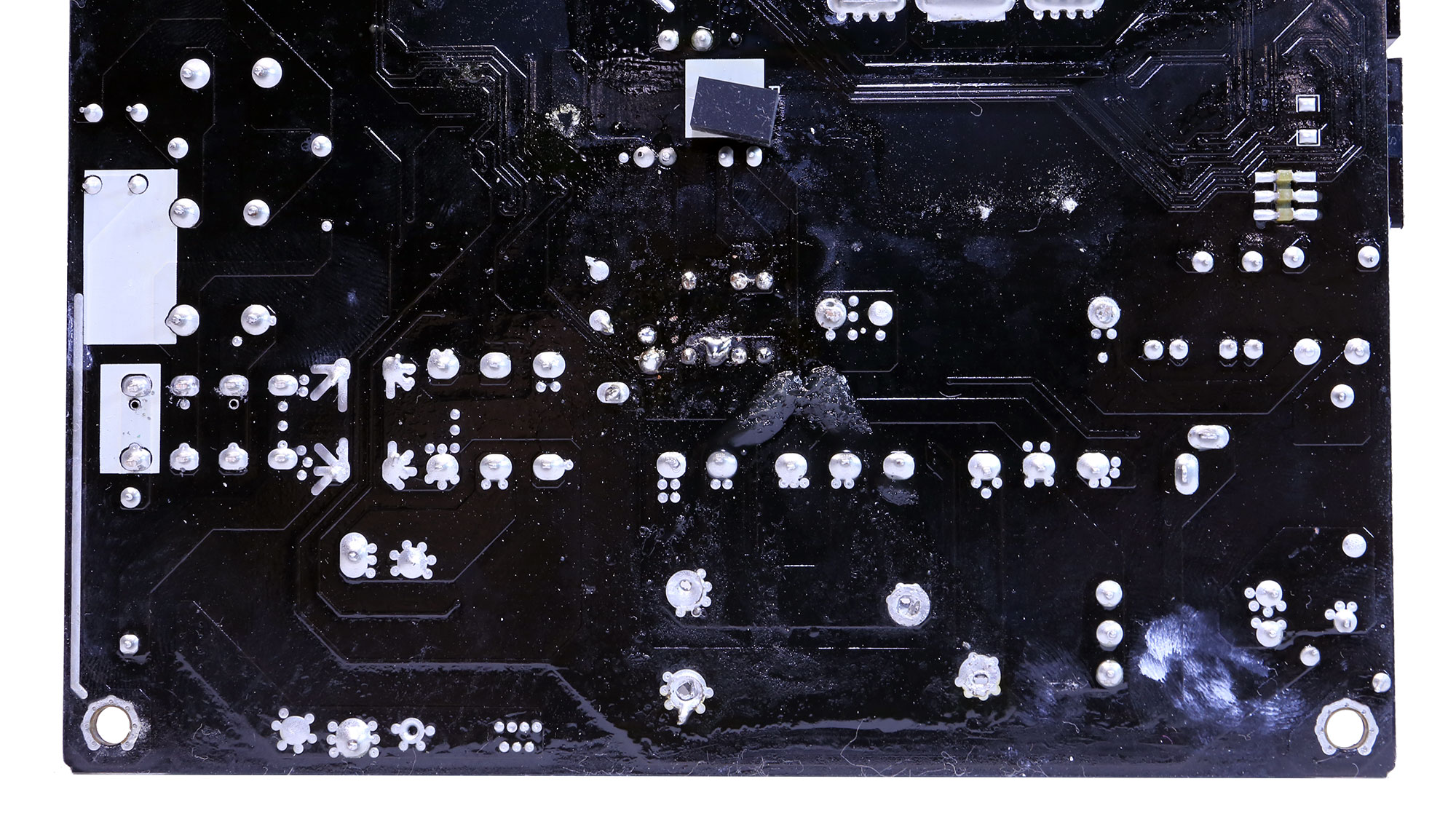
Not much to see on the solder side. This is a major difference in design compared to the other popular platforms by Seasonic, CWT, and Super Flower.
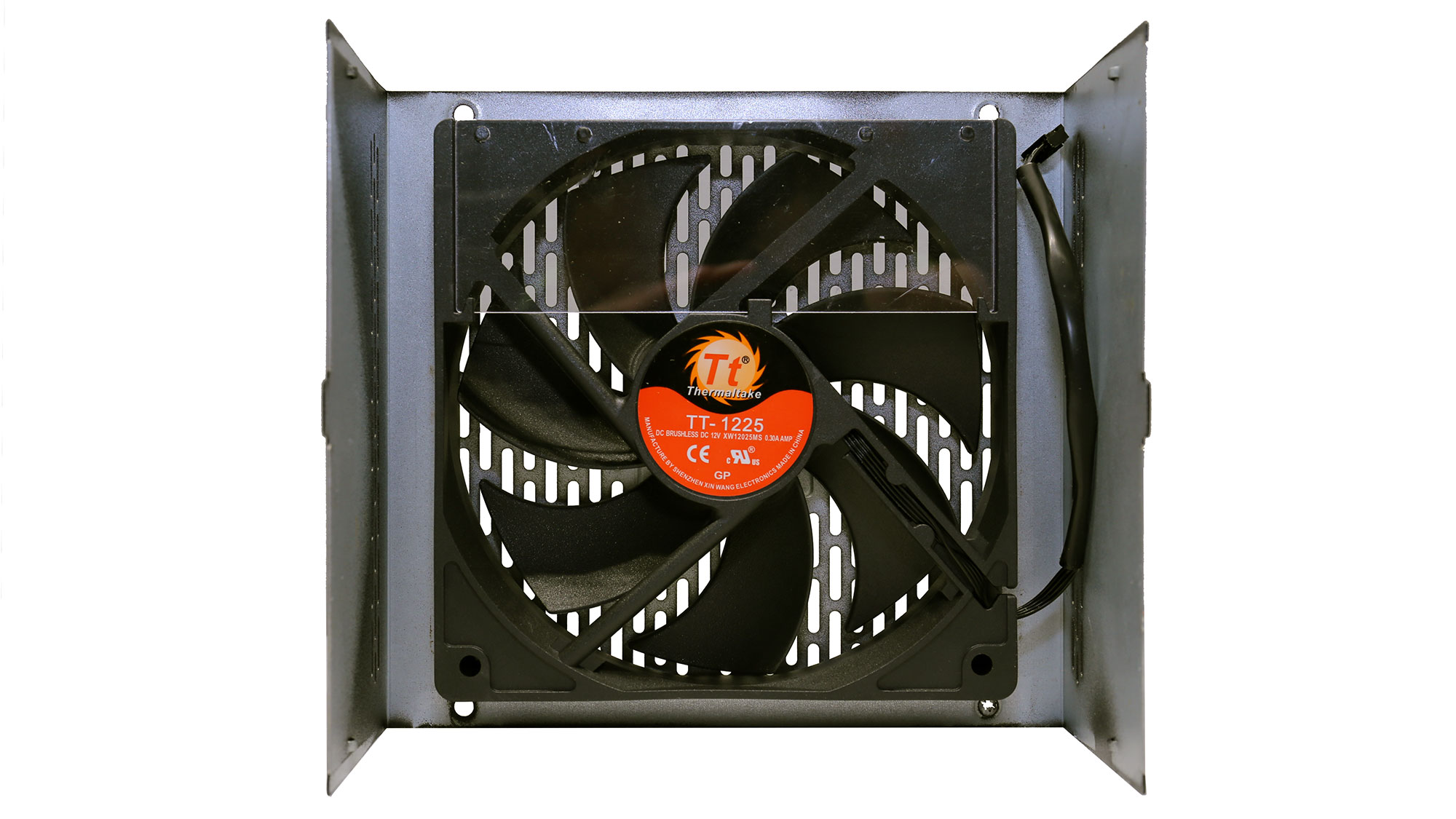
Cooling fan

The cooling fan has Thermaltake's logo, and it uses a Hydraulic bearing. It's OEM is Shenzhen Xin Wang Electronics, another Chinese fan manufacturer with better prices, most likely, compared to popular brands like Hong Hua and Globe Fan.
MORE: Best Power Supplies
MORE: How We Test Power Supplies
MORE: All Power Supply Content
Current page: Specifications and Part Analysis
Next Page Load Regulation, Hold-Up Time, Inrush & Leakage Current, Efficiency and Noise
Aris Mpitziopoulos is a contributing editor at Tom's Hardware, covering PSUs.

